12 of the best places to visit in Austria

May 9, 2024 • 14 min read

From Zell am See to culture-packed Vienna, here are the best places to visit in Austria © auerimages / Getty Images
Imagine Austria and your mind might well drift to the lavish palaces and coffeehouses of Vienna , the snow-white peaks of the Tyrolean Alps , the river romance of the Danube and Mozart symphonies ringing out in the baroque concert halls of Salzburg .
And if this is your first visit, you’ll undoubtedly want to see all the whole darned lot and more besides. But there is far more to this pocked-sized, landlocked country than at first meets the eye.
Whether you are heading gleefully high into the glaciated mountains of Hohe Tauern National Park , tuning into the latest tech wizardry in future-focused Graz , hiding away in the little-visited wilds of the Bregenzerwald, or tripping along the vineyard-draped wine roads of southern Styria , which have more than a whisper of Tuscany about them, Austria richly rewards those who dare to deviate from the well-trodden track.
Here's our take on the best places to visit in Austria.

1. Zell am See
Sitting smugly on the shores of a bluest-blue lake and buttressed by lofty peaks, Zell am See is a knockout. The cheerful Alpine resort has sensational wilderness on its doorstep, including the glacier-capped 3203m (10,509ft) Kitzsteinhorn , where you can embark on a glacier trail, kick back on a snow beach, spend the night in an igloo, and ski well into summer. It’s also perfect for dipping into the ravishing mountains of Hohe Tauern National Park.
The resort has a real outdoor buzz in summer, with people rocking up to swim, boat, windsurf and stand-up paddleboard on the lake, cycle around or paraglide above it. If you’re a hiker, you’re in for a treat, too: a cable-car zips up to Schmittenhöhe to hook onto the 17-km (10.5-mile), moderately challenging Pinzgauer Spaziergang , one of Austria’s most memorable day hikes, with exhilarating views of the country’s highest peak, 3798m (12,461ft) Grossglockner. The resort also makes a terrific springboard for the Grossglockner High Alpine Road , a head-spinning, helter-skelter drive, with on-high views of waterfalls, lakes, glaciers and a sea of snowy Alps.
Planning tip: Dodge the peak-season crowds by visiting as soon as the snow begins to melt from the highest summits in late May or in autumn before the flakes fall.
Time your visit to Austria just right with our seasonal guide
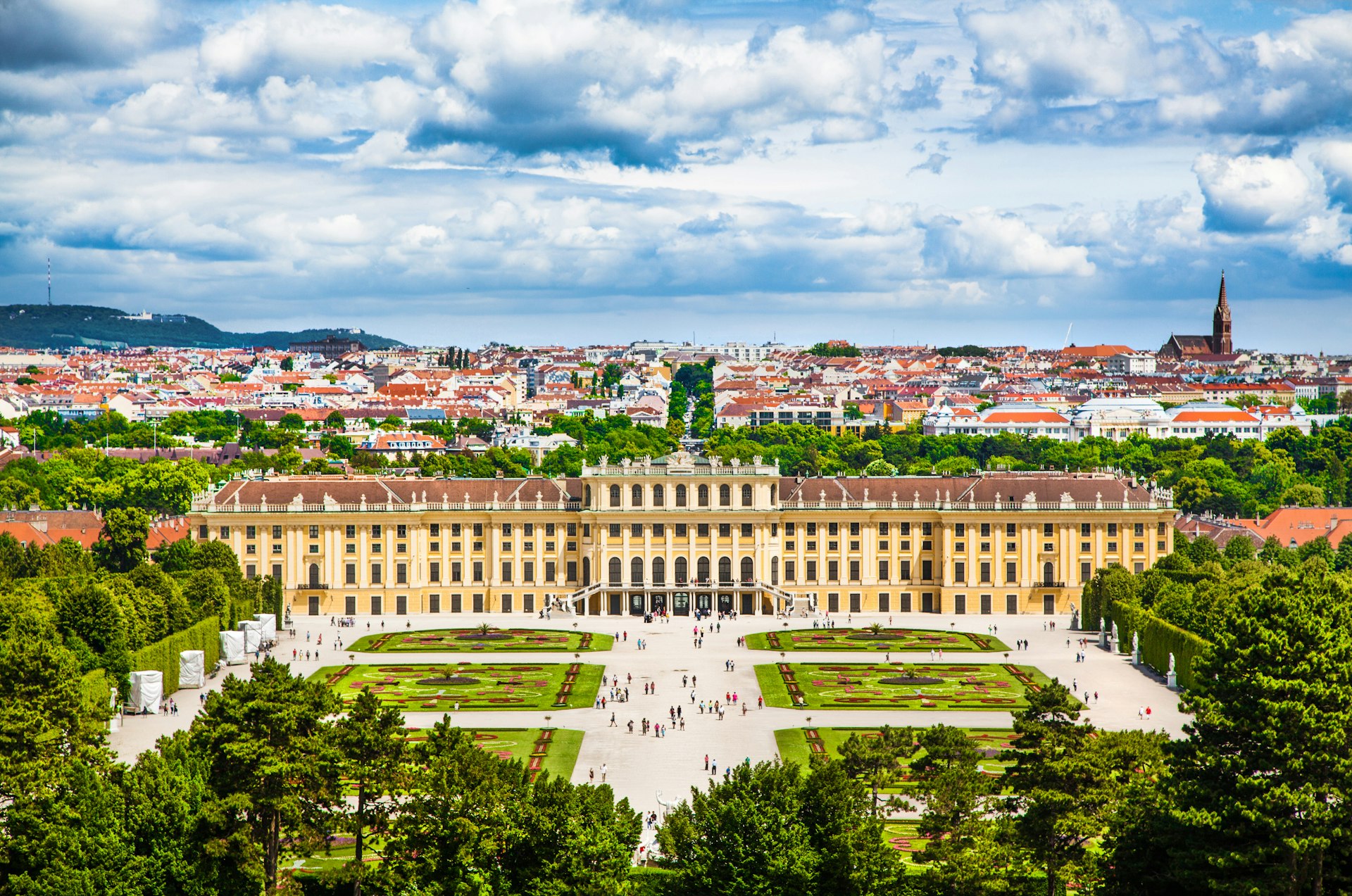
Few cities move so effortlessly between past and present as Vienna, where Hapsburg emperors ruled the roost for 600 years. The pomp and splendor can be almost overwhelming, as you waltz through vast, exuberantly gilded palaces like the Hofburg and Schönbrunn , tour Klimt-filled galleries like the Upper Belvedere , stroll grand baroque streets, and saunter past follies and Greek gods in landscaped gardens that gaze down upon the city with a kindly eye.
The music of Mozart, Beethoven and that old romantic devil Strauss reverberates in some of the world’s most feted and opulent concert halls: the Musikverein and Staatsoper . And even going for a coffee can be a regal affair at the likes of chandelier-lit Café Central , where all the 19th-century bigwigs once hung out.
Vienna isn’t all about show. Venture beyond the big-hitters of the Innere Stadt and the Gothic whack of Stephansdom and you’ll find a liveable, loveable capital that moves to its own urban, edgy beat: in parks sprawling along the banks of the Danube, at the MuseumsQuartier , delivering a serious hit of culture in the former baroque imperial stables, and at food markets like Naschmarkt , where Vienna embraces the world in street food and spice.
Planning tip: As night descends and the city twinkles, take a self-guided tour of the monumental Ringstrasse boulevard that wraps around Vienna’s historic 1st district (Innere Stadt) on trams 1 and 2.
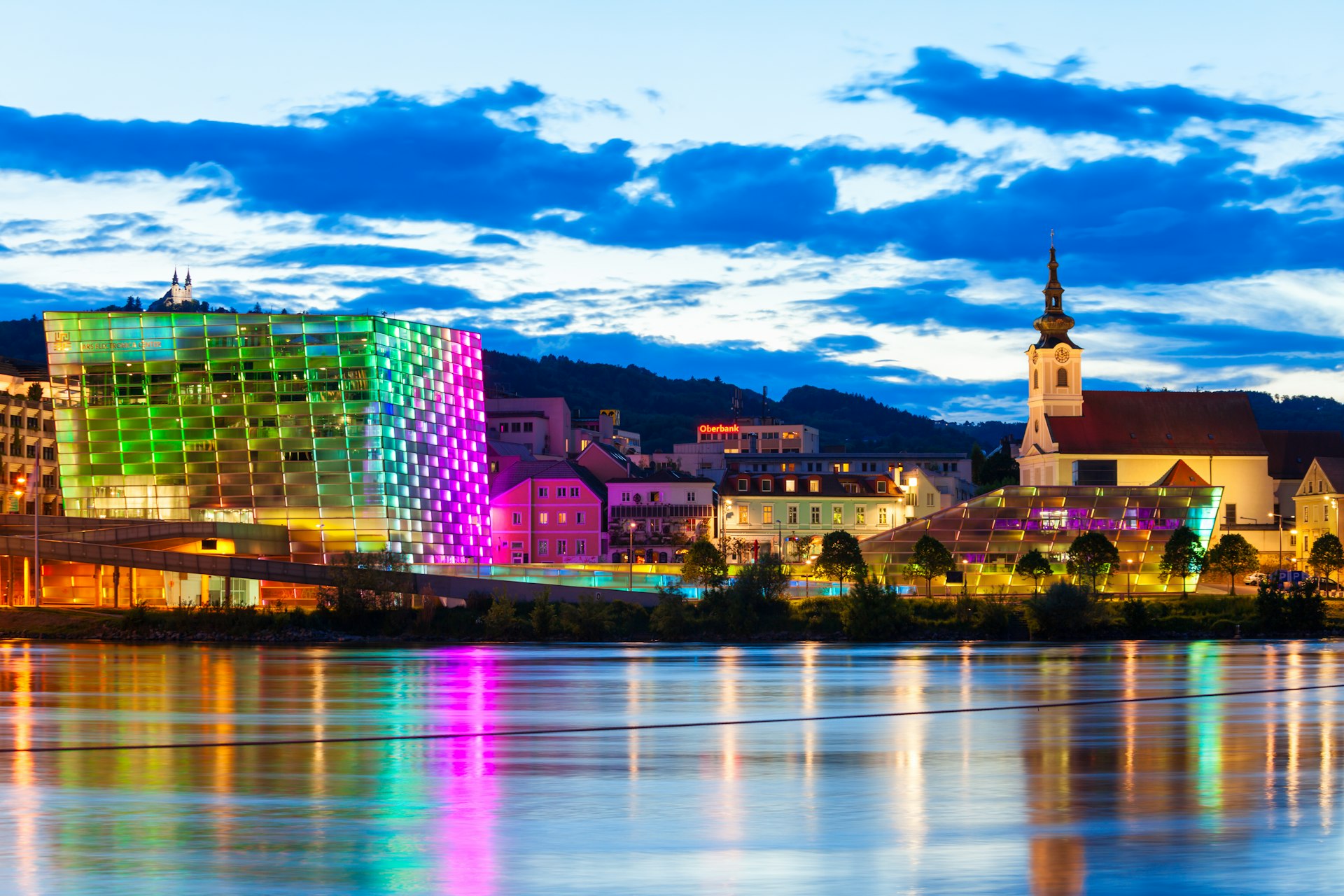
Other Austrian cities flick on the fairy-tale charm, but not Linz . This is where Austria leaps headfirst into the 21st century. With its gaze fixed firmly on the future, this tech-mad trailblazer has an ever-evolving cultural scene, and is making pioneering waves in avant-garde art and architecture, with a flurry of galleries and buildings at the cutting edge of design; all of which helped it snag UNESCO City of Media Arts status back in 2014.
At the top of any itinerary is Ars Electronica Center , zooming in on technology, science and digital media. Here you can interact with robots, animate digital objects, print 3D structures, turn your body into musical instruments and (virtually) travel to outer space. Its over-the-Danube rival is the rectangular glass-and-steel Lentos , a vast repository of modern art, with a stash of Warhol, Schiele, Klimt and Kokoschka originals. Both museums have a face-off of illuminations when they strikingly change color by night.
Planning tip: Tune into the art and technology of the future – from VR to biotech, robotics to media art – at the five-day Ars Electronica Festival held in early September.
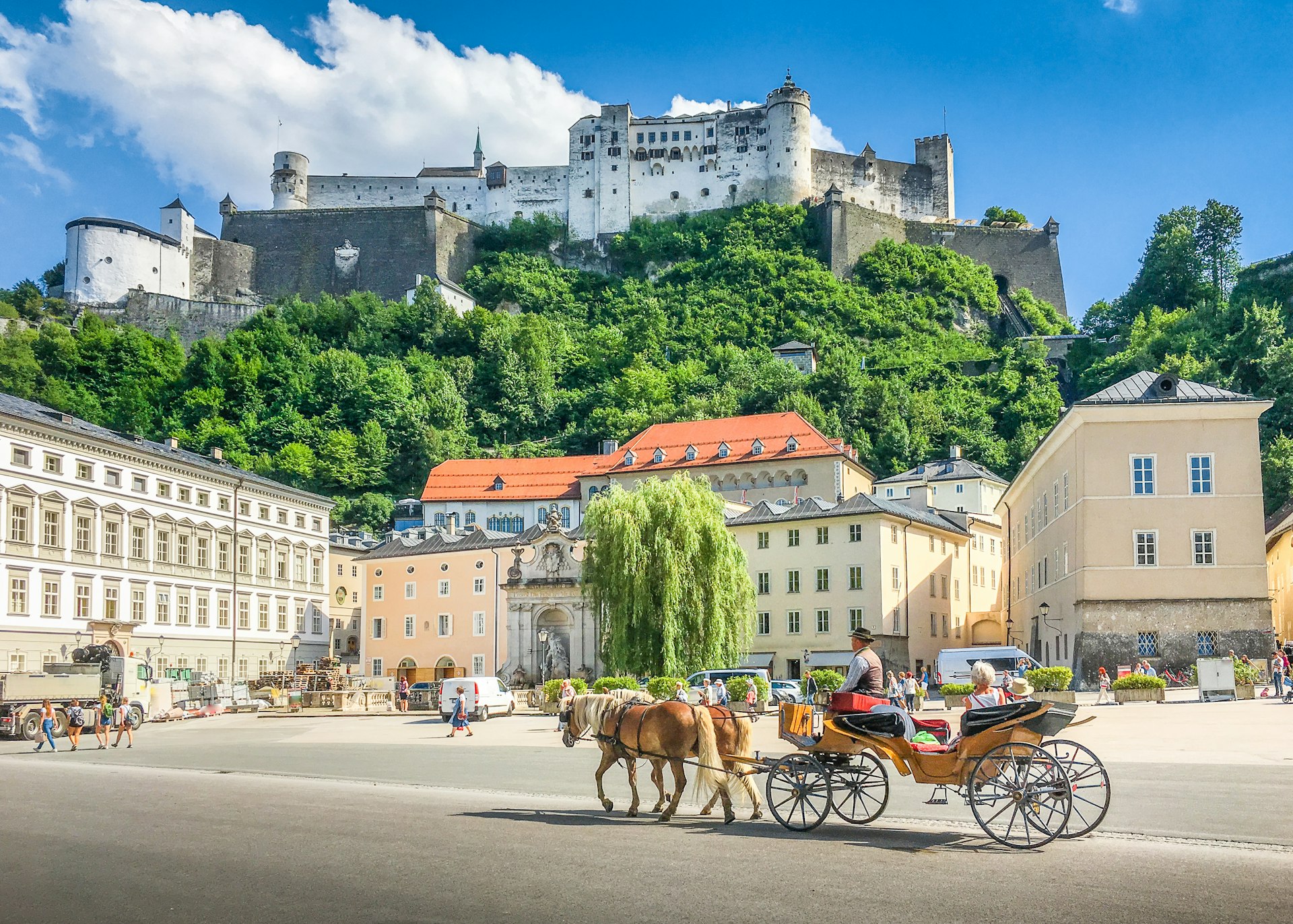
4. Salzburg
On the banks of the fast-flowing, turquoise Salzach River, Salzburg looks freshly minted for Hollywood. From the moment you arrive, you’re forced to gaze up in wide-eyed wonder: at the soaring spires of its brilliantly baroque Altstadt, home to the Residenz palace , where prince-archbishops once held court, and the copper-domed cathedral ; at its high-on-a-hill, 900-year-old fortress, Festung Hohensalzburg ; at the cliffs of 540m-high (1772ft) Mönchsberg flinging up above the city; and at the white-wisped peaks of the Alps that pucker up on the horizon.
Salzburg has churned out many a legend, most notably Mozart, who was born in a bright-yellow townhouse on Getreidegasse, which now harbors a museum that’s an ode to the virtuoso. His high-note-hitting rival is Maria of The Sound of Music (1965) fame. Boundless tours and bike rides whizz around the film locations, or devise your own self-guided spin of them.
Escape the masses by taking a spirit-lifting hike along the wooded cliffs of Mönchsberg to Augustiner Bräustübl , a 400-year-old, monk-founded brewery, with Oktoberfest flavor, vaulted parlors, and a 1000-seat beer garden for quaffing foaming beers under the chestnut trees. For a breath of fresh Alpine air and trails weaving deep into the mountains, hitch a ride on the cable car up to 1853m-high (6079ft) Untersberg on the border with Bavaria.
Planning tip: Salzburg gets totally swamped in peak season. Rooms are like gold dust and rates rocket during the festival from mid-July to late August. Spring and autumn are less crowded, while winter here is cold but beautiful, particularly when Christmas markets sparkle.

5. Graz and the Styrian Wine Roads
With a castle high on a bluff, an Altstadt that’s a jumble of Renaissance courtyards and baroque palaces hinting at nearby Italy, and some strikingly avant-garde galleries, Graz is an endearingly laid-back, cultured city for dipping deeper into the oft-overlooked region of Styria in southern Austria.
Using the city as a base, you can easily strike out onto the Weinstrassen (wine roads) that vein the gently rolling hills, flower-stippled meadows, forests and vineyards that carpet the south of the province. With vineyards marching up steep hillsides and even the odd poppy and cypress tree, this is Austria’s answer to Tuscany (minus the crowds) and perfect road trip territory . As you make your way through towns like Leutschach, Ehrenhausen, Gamlitz and Berghausen, you’ll find wineries opening their doors for tastings and farmhouses offering rustic respite.
Planning tip: On the last weekend in September, the region pops many corks at its Weinlesefest (wine harvest festival).
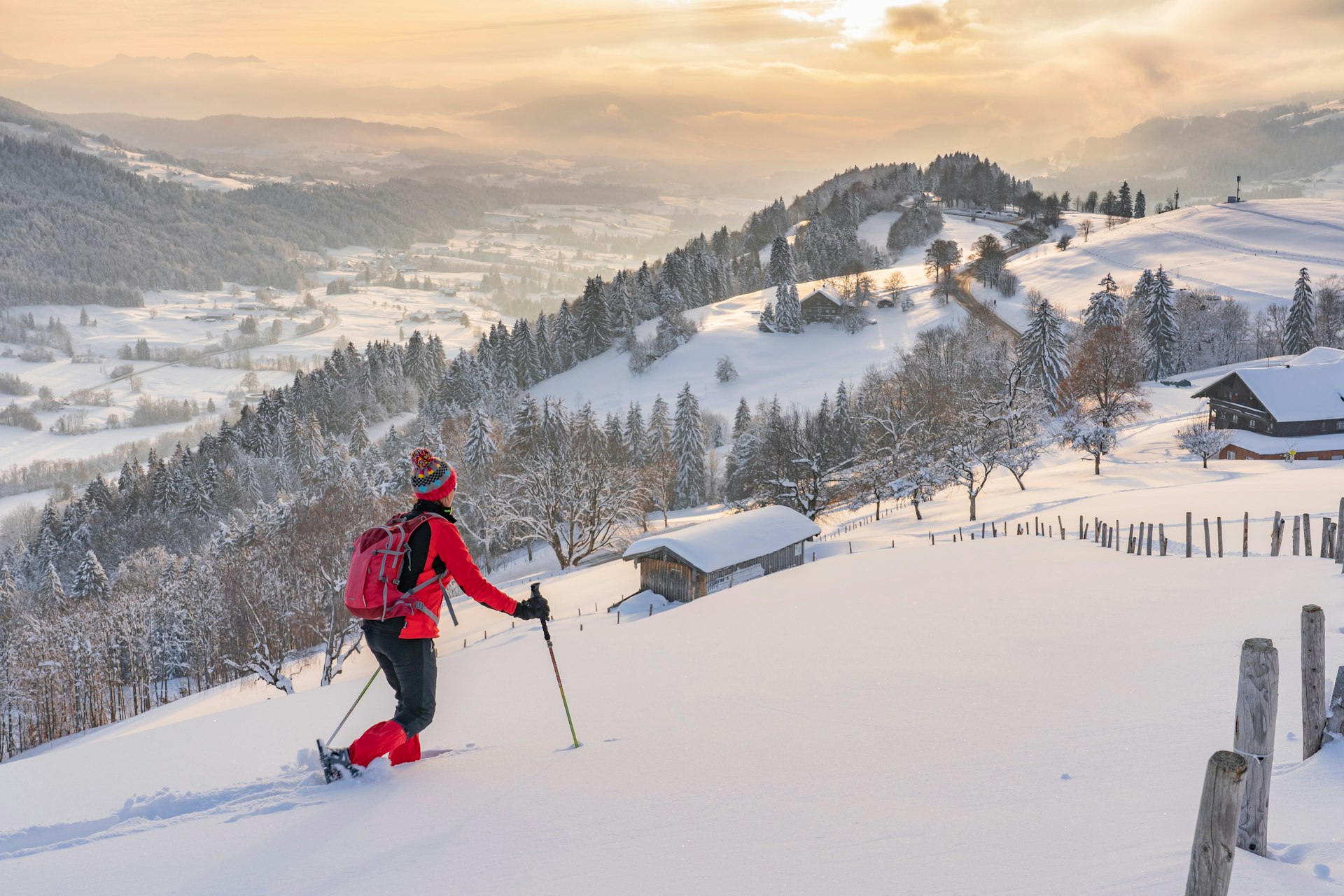
6. Bregenzerwald
Everyone raves about the mountains of Tyrol and Salzburgerland, but there’s a lesser-known region that deserves a look-in. Huge swathes of Austria's far west, Vorarlberg , remain deliciously off-the-radar, with narrow, silent valleys carving up mighty peaks and forests. It is here that the Alpine heights of the Silvretta-Montafon give way to the wavy hills and lush dairy country of the Bregenzerwald, which in turn fall to the Bodensee (Lake Constance), where Austria rolls into Germany and Switzerland.
The Bregenzerwald, in particular, is an incredibly peaceful and deeply rural corner of the country to slip off the map for a few days, whether hiking, cycling or cross-country skiing. Roads here unzip through cow-nibbled pastures, passing limestone peaks and one ludicrously pretty timber chalet-lined village after the next. The dream is Schwarzenberg, where you can visit the Angelika Kauffmann Museum before lunch in the wood-panelled parlor at Gasthof Hirschen .
Planning tip: You’ll need own wheels to explore the region’s KäseStrasse (cheese road), which twists through valley and lush mountain meadow, linking up cheese-makers, farm shops and Schoppernau’s show dairy .
For more great driving routes check out our guide to Austria's best road trips
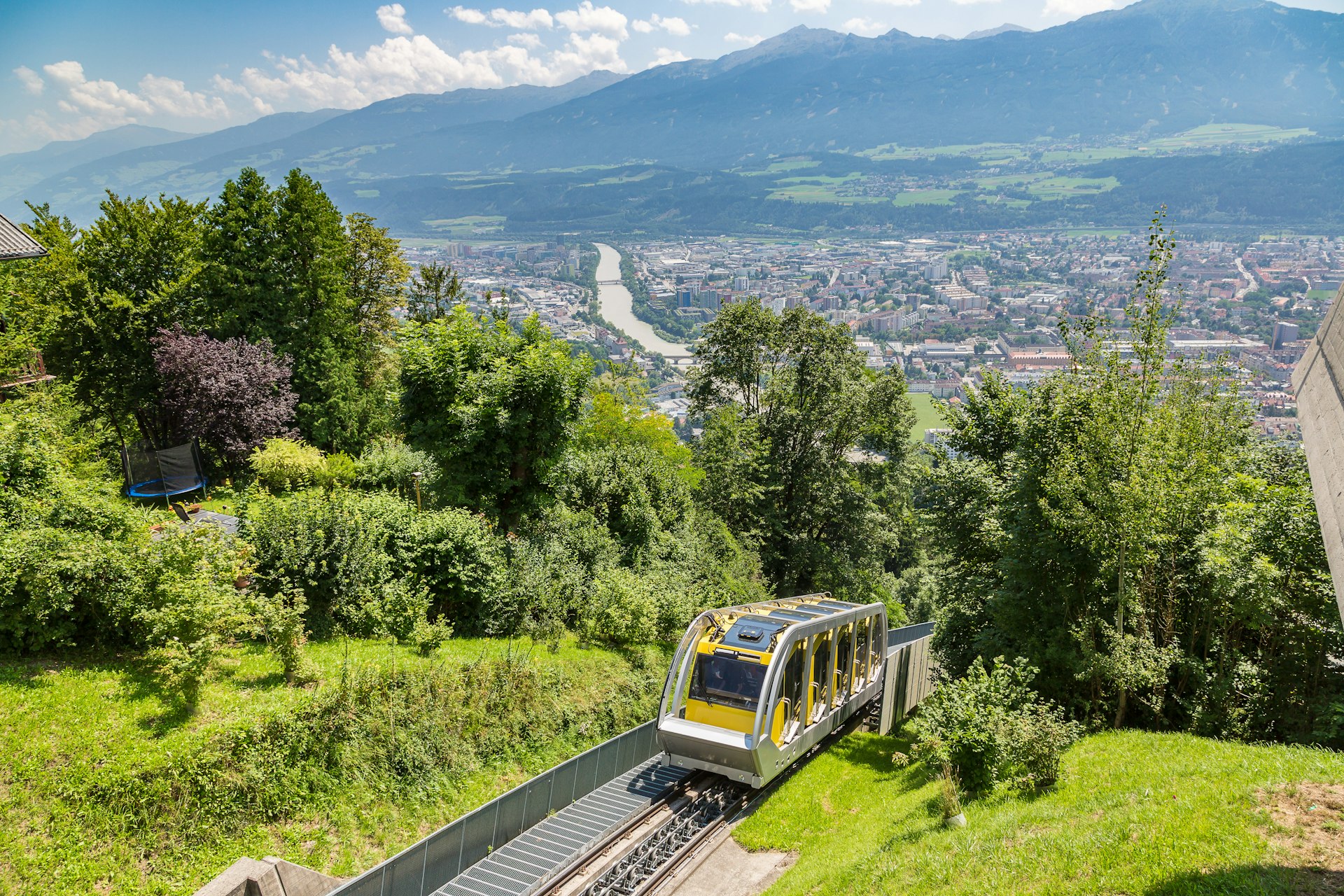
7. Innsbruck
The jagged Nordkette Alps rise like a theater curtain above Innsbruck , Tyrol’s rivetingly pretty capital. Here mountains whoosh up above the turquoise Inn River and seem to sneak into every picture. Can’t decide between city and slopes? Here you get the best of both, with a space-age funicular designed by architect Zaha Hadid winging you up to the Alpine heights of 2334m (7657ft) Hafelekar in mere minutes.
Innsbruck is perhaps unique in the fact you can spend the morning carving powder, hiking or dashing downhill on a mountain bike, and the afternoon with a serious hit of culture. Begin by wafting around the swanky imperial state apartments of the cupola-topped Hofburg palace. Nearby the Goldenes Dachl catches your eye, a late-Gothic oriel shimmering with 2657 fire-gilded copper tiles. But all that glitters here is not gold: just a quick bus hop from town, Swarovski Kristallwelten in Wattens delivers some serious crystal sparkle.
To ramp up the adventure, head to the neighboring village of Igls for a pulse-quickening ride on the Olympiabobbahn, where you’ll pick up speeds of 110km/h (68mph) as you pinball around 10 curves.
Planning tip: With stays of two nights or more, you’ll receive the Innsbruck Welcome Card, which entitles you to benefits like free public transport, bike rental, rides on mountain lifts, guided hikes (in summer) and snowshoe tours (in winter) .
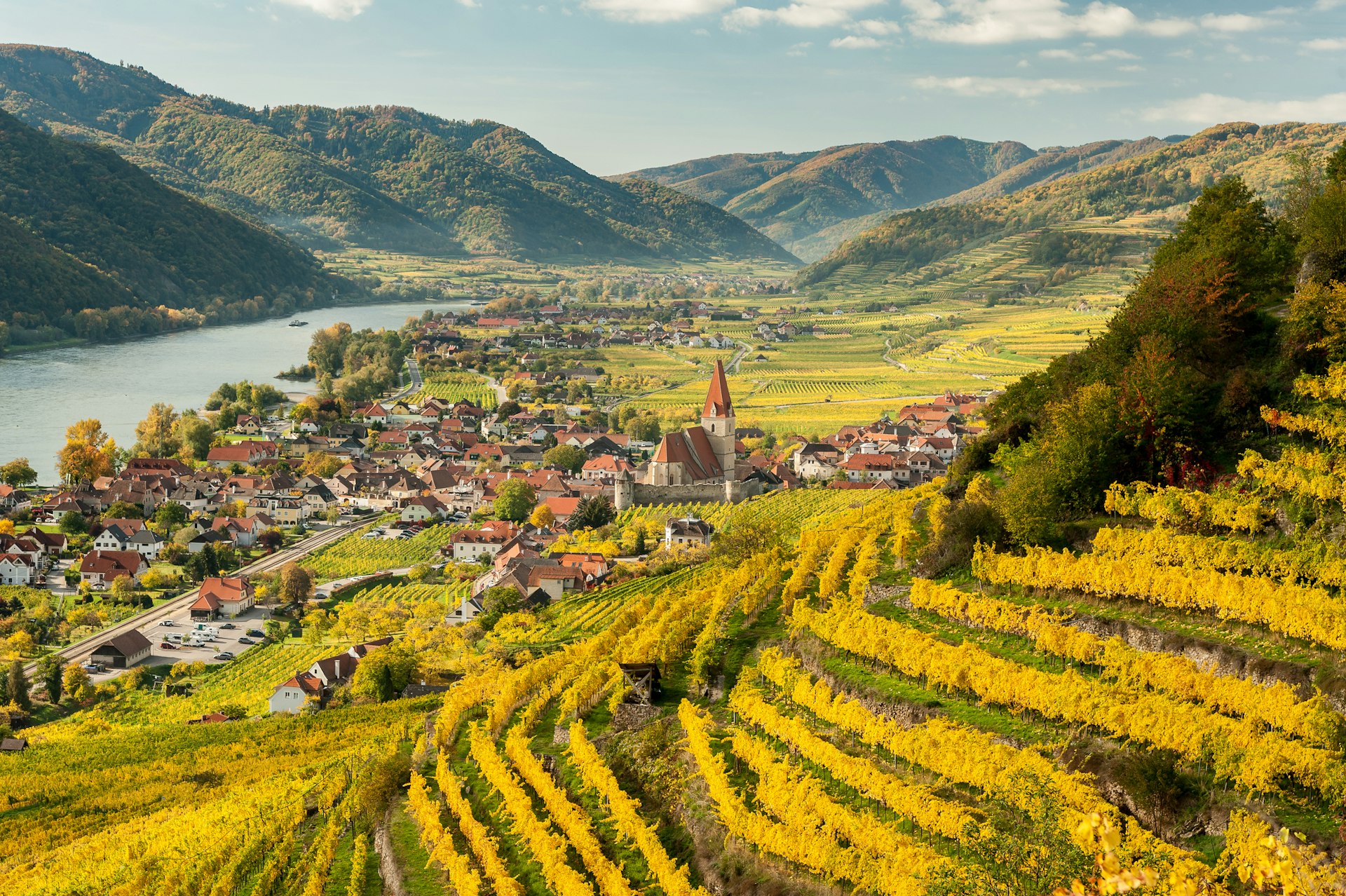
7. The Wachau
Few places capture the soul of Austria like the Wachau , a skip west of Vienna, with mellow landscapes unfolding as harmoniously as a Strauss symphony. Here orchards and vineyards rib terraced slopes that stagger down to the meandering River Danube, and trails waltz through field and forest to medieval castles romantically poised on hillsides. With one of the country’s most exciting food and wine scenes, paths that are a joy to explore on foot or by bike, and poetic landscapes, this stretch of the Danube Valley is so darned scenic that it has been granted UNESCO World Heritage status.
The big-hitter culturally is Stift Melk , a twin-spired, onion-domed baroque stunner of an abbey, with a sunny yellow facade and flamboyantly frescoed monastery church. Beyond this, you’ll want to see the fairy-tale that is Dürnstein’s ruined castle , where Richard the Lionheart was locked up in the late 12th century for insulting Leopold V, and the low-key village of Spitz, topped off by the 1000-Eimer-Berg, so-named for its ability to fill 1000 buckets of wine each season.
Planning tip: Trains run from Vienna to Krems and Melk in an hour, making this a cracking day trip from the capital . Rent wheels with nextbike to pedal along the river and through wine country on a stretch of the Danube Cycle Path.
Looking for other day trips from Vienna? Here are some of the best
9. Bad Gastein
Smuggled away in a wildly romantic valley in the glacier-capped Hohe Tauern mountains, Bad Gastein is an instant heart-stealer, with belle époque villas that evoke the grace of a bygone age clinging to sheer, forested slopes, and a 341m (1119ft) waterfall plummeting over cliffs. Over the centuries the town has beguiled everyone – from beauty-conscious Romans to romantic souls such as Schubert and Klimt and royals like Empress Elisabeth – for the miraculous healing powers of its radon-laced thermal hot springs.
Today you can take these same waters at the grotto-filled Felsentherme and architecturally innovative Alpentherme baths. Or, for greater impact, go deep into the bowels of the Gasteiner Heilstollen , a medieval gold mine turned health center, to absorb the radon (taster sessions are available), said to cure all manner of ills from arthritis to fibromyalgia.
One look at the mountains that fling up above the valley and you’ll be itching to head higher. A gondola swings up to 2200m (7218ft) Stubnerkogel , where you can hike across a 140m-long (459ft) suspension bridge for out-of-this-world views deep into the snowy Hohe Tauern peaks, or ski in winter.
Planning tip: Stay overnight and you get the Gastein Card, which entitles you to free use of local public transport, free guided half-day and full-day hikes, plus substantial discounts on mountain lifts, thermal baths and activities.
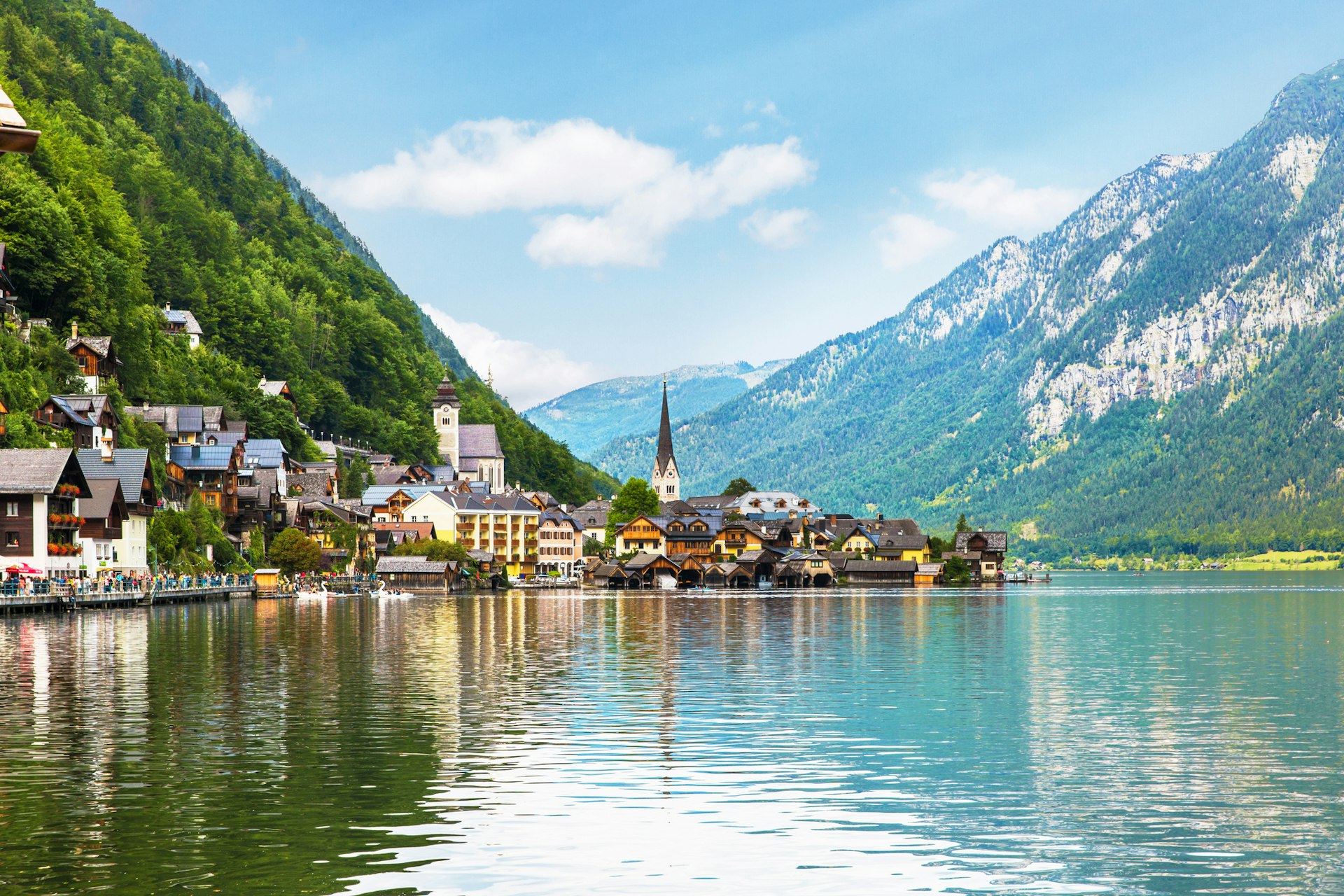
10. Salzkammergut Lakes
If you’ve ever swooned over a lake scene in The Sound of Music it was probably filmed in the Salzkammergut , a fantasy region of jewel-colored Alpine lakes, wildflower-strewn valleys and peaks topping out near the 3000m (9845ft) mark. Should you only have time to see one lake, make it crazily pretty Hallstatt , a heavenly splash of glassy green-blue water, rimmed by the Dachstein Mountains. So gorgeous that it inspired the kingdom of Arendelle in the 2013-Disney blockbuster Frozen , its looks haven’t gone unnoticed and the village’s streets are clogged in summer. A funicular floats up to UNESCO-listed Salzwelten , the world’s oldest salt mines, which peer back on 7000 years of history and once produced the region’s "white gold".
The region rewards those who don’t rush straight off: allow longer so you can soak in thermal baths in spa town Bad Ischl, bathe in the warm waters of crescent-shaped Mondsee , follow in pilgrim’s footsteps to Wolfgangsee, and explore the icy underworld of the Dachstein Caves in Obertraun.
Planning tip: While July to early September are ideal for lake swimming (the water is mighty chilly at other times of the year), you might prefer to visit in the shoulder seasons – spring and autumn are glorious – to escape the selfie stick-wielding throngs and enjoy the lakes in peace.
11. Steyr and Nationalpark Kalkalpen
So you want to go properly off piste? Upper Austria is the place to do just that. Somehow this region has managed to slip under the tourist radar – making it ripe for an away-from-the-crowds adventure. This province has its own quiet, lingering beauty, with golden wheat fields giving way to patchwork fields and apple orchards that in turn rise to mountains rolling to the Czech border. It’s a joy to explore on foot or by bike, with cycle paths hugging river banks, rambling farms selling homegrown Most (cider) and mellow autumn mists.
The fairest town by far is Steyr, which composer Franz Schubert called "inconceivably lovely" and used as the inspiration for his sprightly "Trout Quintet". At the confluence of the swiftly flowing Enns and Steyr rivers, this pretty town of cobblestones and pastel-hued baroque houses makes a brilliant base for diving into the rest of the region.
Planning tip: For hiking, mountain-biking and rock climbing action, the Nationalpark Kalkalpen ’s limestone peaks, gorges, and high moors are within easy striking distance.
12. St Anton am Arlberg
In the beginning there was St Anton am Arlberg... In the place where the country’s first ski club was founded in 1901 and downhill skiing was born, the Austrian Alps take a huge leap into wilder heights. Overshadowed by a real beast of a mountain called Valluga (2809m/9216ft), this resort makes even veteran skiers quiver in their boots with some of Austria’s steepest on- and off-piste skiing . The ultimate challenge is the Run of Fame. One of the longest circuits in the Alps, this 85km (53-mile) marathon ski wraps up the entire Arlberg arena and covers 18km (11 vertical miles). With 305km (190 miles) of slopes to pound, the skiing here is the stuff of legend. And the après-ski scene is bonkers – people here like to party as hard as they play.
While winter is the big deal for most, the outdoor action ramps up in summer too, with hiking trails heading from peak to glorious peak, and adventure pros H2O taking you white water rafting on the fast-flowing Inn River, canyoning in the surrounding gorges, tubing, and mountain biking. If mindfulness is more your bag, mountain yoga is having a moment here too, with the resort playing host to a peak-gazing, mood-lifting, body-bending festival in early September.
Planning tip: From mid-June to early October, all guests receive the handy St Anton Summer Card , including benefits like free use of public transport, entrance to local museums, guided hikes, yoga classes and swimming pool entry.
This article was first published Nov 2, 2021 and updated May 9, 2024.
Explore related stories
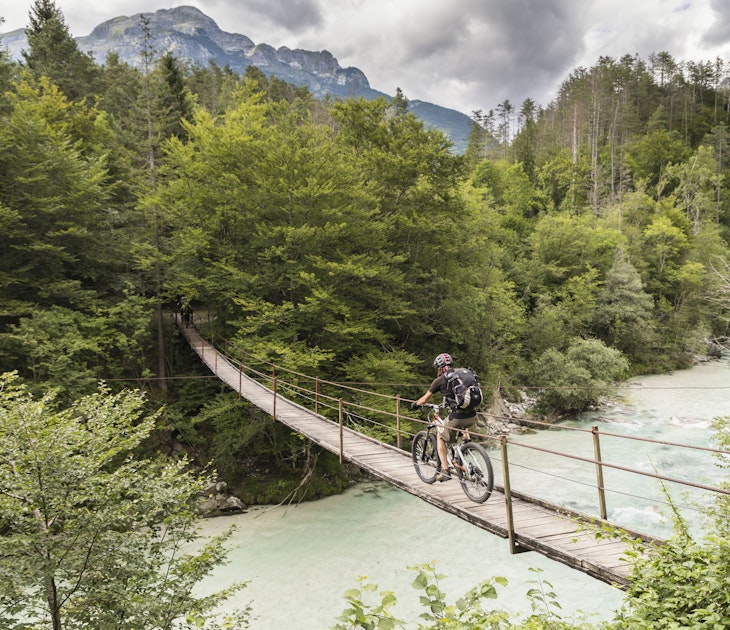
Budget Travel
Apr 27, 2024 • 5 min read
With affordable public transport, great food markets and discount cards, a visit to Slovenia needn't blow up your budget.

Jan 19, 2024 • 11 min read

Jan 5, 2024 • 20 min read
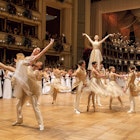
Nov 6, 2023 • 5 min read
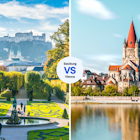
Oct 9, 2023 • 7 min read

Sep 29, 2023 • 7 min read

Jul 3, 2023 • 3 min read
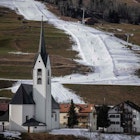
Jan 6, 2023 • 5 min read
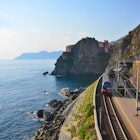
Dec 27, 2022 • 8 min read
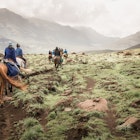
Dec 26, 2022 • 14 min read
Travel Guide Austria
Book your individual trip , stress-free with local travel experts
Select Month
- roughguides.com
- Travel guide
- Local Experts
- Travel Advice
- Accommodation
Plan your tailor-made trip with a local expert
Book securely with money-back guarantee
Travel stress-free with local assistance and 24/7 support
Glorious Alpine scenery, monumental Habsburg architecture, and the world’s favourite musical – Austria’s tourist industry certainly plays up to the clichés. However, it’s not all bewigged Mozart ensembles and schnitzel; modern Austria boasts some of Europe’s most varied museums and contemporary architecture not to mention attractive and sophisticated cities whose bars, cafés and clubs combine contemporary cool with elegant tradition.
Where to go in Austria
Travel ideas for austria, created by local experts.
_listing_1640546826392.jpeg)
15 days / from 6322 USD
Capitals of Europe - Berlin, Prague, Vienna and more
This trip is ideal for all city & culture lovers: the Reichstag in Berlin, the castle in Prague, historical Cesky Krumlov, St Stephen's Cathedral in Vienna, the fortress above Salzburg and Schloss Neuschwanstein near Munich - these are just some of the highlights of this incredible roundup trip.
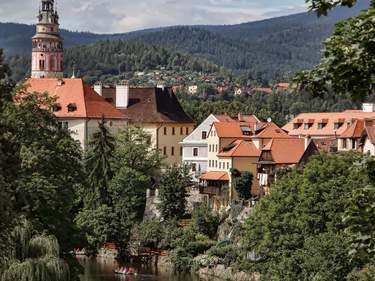
11 days / from 4251 USD
Castles across Austria and Czechia
Austria and Czechia are home to some of the world's most beautiful architecture and culture gems, such as Schloss Schönbrunn in Vienna, Prague castle, the fortress above Salzburg and many more. Finish your tour with a visit to Schloss Neuschwanstein before flying out of Munich.
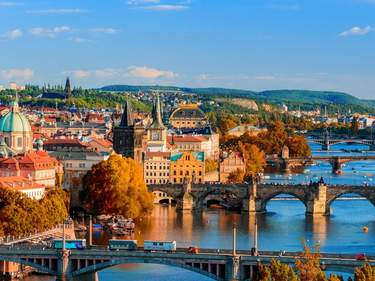
11 days / from 3543 USD
Exclusive trip to Prague and Austria
Explore the main highlights of Central Europe: fascinating Prague & historical Cesky Krumlov, the highlights of Vienna, Salzburg and Innsbruck in Austria and then further on to Germany - get in the Disney spirit at Schloss Neuschwanstein.
- Population 8.47 million
- Language German
- Currency Euro (€)
- Capital Vienna
- International phone code t 43
- Time zone GMT +1hr
Long the powerhouse of the Habsburg Empire, Austria underwent decades of change and uncertainty in the early twentieth century. Shorn of her empire and racked by economic difficulties, the state fell prey to the promises of Nazi Germany. Only with the end of the Cold War did Austria return to the heart of Europe, joining the EU in 1995.
Politics aside, Austria is primarily known for two contrasting attractions – the fading imperial glories of the capital, and the stunning beauty of its Alpine hinterland. Vienna is the gateway to much of central Europe and a good place to soak up the culture of Mitteleuropa .
Less renowned provincial capitals such as Graz and Linz are surprising pockets of culture, innovation and vitality. Salzburg , between Innsbruck and Vienna, represents urban Austria at its most picturesque, an intoxicating Baroque city within easy striking distance of the mountains and lakes of the Salzkammergut , while the most dramatic of Austria’s Alpine scenery is west of here, in and around Tyrol , whose capital, Innsbruck , provides the best base for exploration.
If you are looking for great travel experiences in Austria while avoiding the crowd, check out our tips here.

Without a visit to Vienna you’ll return home with only half the picture. Built on a grand scale as seat of the Habsburg Empire, it’s a place that positively drips with imperial nostalgia.The pickings are rich, with the old palaces of the Hofburg and Schönbrunn high on the list, as are the cultural offerings from the gargantuan art collections of the Kunsthistorisches Museum to the new cultural complex of the MuseumsQuartier.
Equally compelling, nowadays, are the ghosts of Vienna’s golden age at the end of the nineteenth century, when the likes of Freud, Klimt, Schiele and Schönberg frequented the city’s cafés.The city boasts some wonderful Jugendstil and early modernist buildings and a bevy of traditional fin-de-siècle cafés patrolled by waiters in tuxedos. Last, but by no means least,Vienna is by far the best place in the country for night- life, and that means everything from top-class opera to techno.
Salzburg is no less intoxicating. Its Altstadt contains the country’s most concentrated ensemble of Baroque architecture, and the Hohensalzburg fortress is arguably the country’s most impressive medieval castle. A substantial musical pedigree is ensured by the city’s status as the birthplace of Mozart and venue of the Salzburg Festival, one of the world’s most renowned celebrations of classical music and theatre.
Of Austria’s other regional capitals, Innsbruck combines both a buzzing 9 nightlife and close proximity to some of the Tyrol’s highest peaks to make it one of Austria’s most popular destinations. Its attractive and largely medieval city centre focuses on the Hofkirche, site of the memorial to sixteenth-century Habsburg strongman Emperor Maximilian I.
In the Styrian capital, Graz, the main attractions are the Altstadt, the fine-art collections of the Landesmuseum Joanneum and the Baroque Eggenberg Palace. Austria’s second largest city is also a good base from which to venture out into the vineyards and pumpkin fields of the rural southeast.
Top image: Hallstatt village © Rastislav Sedlak SK/Shutterstock
Travel advice for Austria
From travel safety to visa requirements, discover the best tips for traveling to Austria
- How to get to Austria
- Culture and Etiquette in Austria
- Eating and drinking in Austria
- Getting around Austria: Transportation Tips
- Sports and Outdoor activities in Austria
- Travel Tips Austria for planning and on the go
- Best time to visit Austria
The Rough Guides to Austria and related travel guides
In-depth, easy-to-use travel guides filled with expert advice.

Find even more inspiration here

Planning your own trip? Prepare for your trip
Use Rough Guides' trusted partners for great rates
written by Rough Guides Editors
updated 09.07.2021
Ready to travel and discover Austria?
Get support from our local experts for stress-free planning & worry-free travels.
- Where to stay
- Travel advice

Austria was once part of a mighty empire, which the Habsburgs ruled over from Vienna for some seven centuries. Although Austria today is just a fraction of its former glory, it still maintains its rich cultural and artistic heritage. Vienna is one of Europe’s most attractive cities, combining historic sites with a vibrant creative scene. The city is justifiably famous both for its classical music pedigree and for its elegant grand balls. With two-thirds of the country’s landscape shaped by the Alps, Austria is paradise for anyone eager to explore the mountains—or nature in general. Some of the world’s top ski resorts can be found in the western part of the country. The regions around the Danube, as well as south of Vienna, are known for their many family-run wineries. Austria is also a leader in the farm-to-table movement, and has over 20% of its agriculture, and more than 20,000 farmers, committed to organic farming.
- Copy Link copied

Shutterstock
When’s the best time to go to Austria?
Temperatures in spring and fall are usually milder, making it a great time to visit. Winter sports are a major draw to the resort towns in the Austrian Alps, and the skiing is consistently ranked as some of the best in the world. The season lasts from December through late March. Vienna and Salzburg tend to be more crowded in July and August, and during major festivals. Temperatures vary by region and elevation, but averages do not climb above a comfortable high 70s in Vienna during summer.
How to get around Austria
Vienna can be reached via direct flights from several North American cities, including New York (JFK and Newark), Washington D.C., Miami, Chicago, and Toronto, though it is often practical to fly through Munich or Zurich—especially for a trip to Austria’s western provinces. Smaller airports in cities like Salzburg, Graz, Klagenfurt, and Innsbruck can be easily reached. High-speed trains connect Vienna and Salzburg with cities like Munich and Zurich. A hydrofoil travels between Bratislava and Vienna on the Danube. U.S. visitors can stay up to three months with just a passport, after which time a visa is required. If you are entering Austria using a rental car, make sure there is a Vignette (toll sticker) affixed to the windshield.
Cities in Austria are linked by a fast and efficient rail system, with Vienna to Salzburg taking as little as two-and-a-half hours. To explore large towns and cities, public transportation (bus and tram), biking, or walking is best. Driving on Austria’s highways requires a toll sticker—available in ten-day, two-month, and twelve-month increments—which can be purchased at gas stations, post offices, auto clubs, and even in neighboring countries. Renting a car is another great way to explore rural regions and high Alpine routes.
Food and drink to try in Austria
Austria’s cuisine reflects heavily on its imperial past, with influences from Hungary, Italy, and the Balkans. Classic dishes like Tafelspitz (beef, root vegetables, and sauerkraut), Wiener Schnitzel (veal cutlet, flattened and fried), and Gulasch (rich meat stew, often with paprika) can be found throughout the country, while every region is proud of their speciality dishes. But, let’s face it, the major food draw is really the delectable cakes and pastries, including the famous apple strudel and Sachertorte. You’d be forgiven for not knowing that Vienna is the only world capital producing significant quantities of wine within its city limits. White wines dominate the vineyards of the Wachau Valley, while reds prevail in Burgenland and Styria.
Culture in Austria
Some consider Vienna the cultural capital of Europe. The city has been synonymous with the music of Mozart, Beethoven, and Strauss, to name a few, as well as painters like Klimpt. Elegant balls, nights at the Vienna State Opera (one of the world’s best), and hours spent in coffeehouses are quintessential Vienna. The 640-year legacy of the Habsburg dynasty, which officially ended in 2011 with the death of Otto von Habsburg, can be found throughout the city. Oh, and let’s not forget the Boys Choir. Austria has nine inscriptions on the UNESCO World Heritage List: Schönbrunn Palace in Vienna, the Historic Center of Vienna, Wachau Cultural Landscape, Prehistoric Pile Dwellings around the Alps, Historic Center of Salzburg, Hallstatt-Dachstein/Salzkammergut Cultural Landscape, Graz Historic Center and Eggenberg Palace, Fertö/Neusiedlersee Cultural Landscape, and the Semmering Railway.
The year waltzes in with Vienna’s Ball Season in January and February, during which time “Fasching,” Austrian Carnival, also begins. The world famous Salzburg Festival takes place July–August, culminating with a performance of Hugo von Hoffmannsthal’s Everyman. Summer sees a variety of music festivals, from classical to rock (Nova Festival) to avant-garde (Styrian Fall), as well as wine festivals extending into the fall. Austria’s Christmas markets round out the year. Vienna alone lights up with 20 official Christmas markets selling seasonal gifts, decorations, and sweets.
Local travel tips for Austria
Austria has nine provinces: Vienna, Burgenland, Lower Austria, Upper Austria, Salzburg, Styria, Carinthia, Salzburg, Tyrol, and Vorarlberg. While German is the official language, there are regional dialects that German speakers from outside may have trouble understanding. In some cases, totally different words are used. The German Krankenhaus, for example, is Spital (hospital), and a Brötchen is a Semmel (roll). But language shouldn’t be an issue; English is widely spoken. Austria is a parliamentary democracy, and its national holiday falls on October 26—a day of free entry to state museums and many government buildings.
Related video
Guide Editor


Austria Travel Guide
This Austria Travel Guide aims to provide you with simple and stress-free travel planning information and inspiration for planning a trip to Austria.
On this regularly updated page you will find links to useful posts on The Trusted Traveller, budget information, details on types of accommodation available, information on getting around the country and more useful links to resources around the web.
Quick Facts
Capital: Vienna
Language: German
Currency: € Euros which is made up of 100 cents. Coins come in 1c, 2c, 5c, 10c, 20c, 50c, €1 and €2 denominations and notes in €5, €10, €20, €50, €100, €200 and €500 denominations.
Electricity: 230 volts AC, 50Hz. European plugs with two round pins are standard.
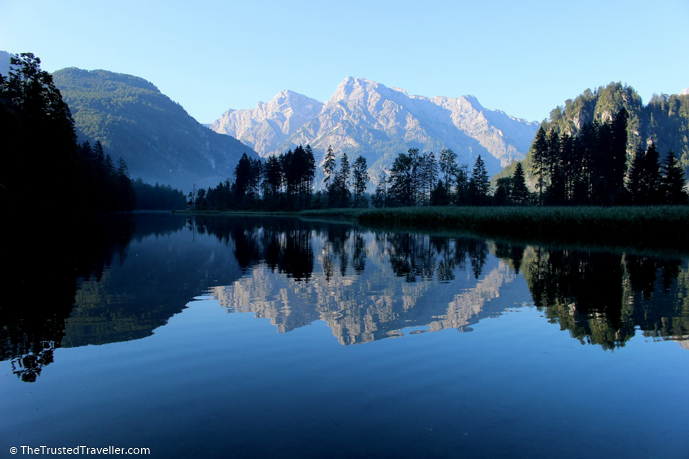
Travel Tips
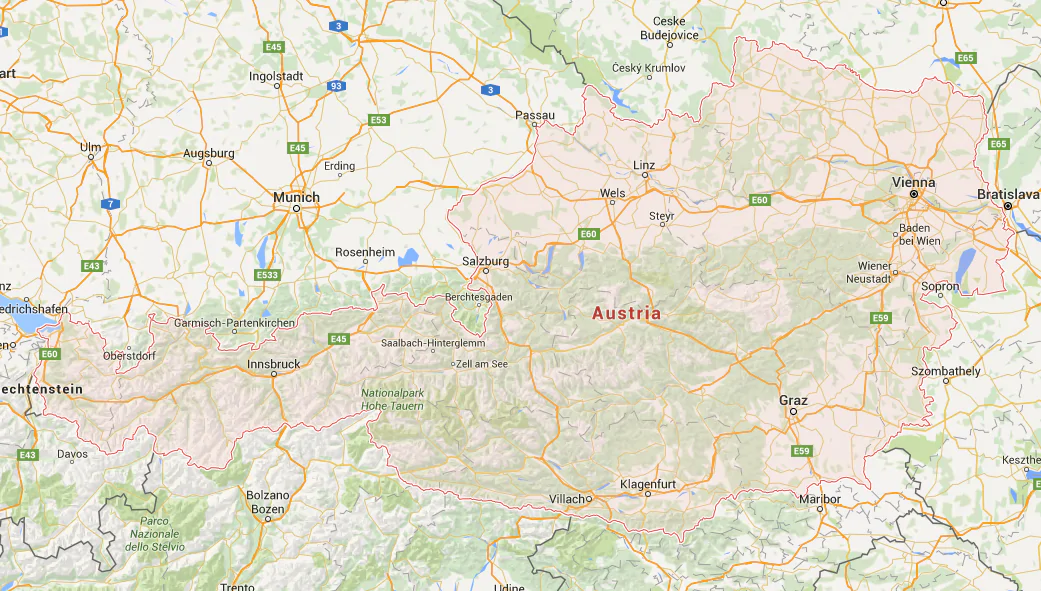
Austria is a small landlocked country right in the heart of Europe bordered by Czech Republic, Germany, Hungary, Italy, Liechtenstein, Slovakia, Slovenia and Switzerland.
The landscape is mountainous with the Alps running right through the country and peaks rising up to over 3,500 metres. Almost half of Austria is forested while the other half is mainly lush green grassland.
Austria has a moderate continental climate which brings warm summer days with cool night and cold sunny winters with lots of snow during the ski season of December to March.
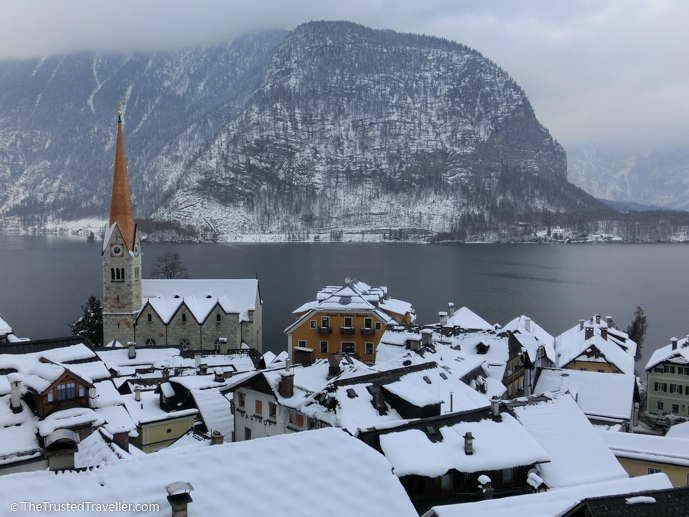
Best Time to Visit
Austria is a year-round destination and you should plan your visit based on the types of activities you wish to enjoy.
June to September (summer) sees lots of sunshine and low rainfall making it the perfect time for hiking in the mountains and exploring the bigger cities.
From November to March (winter) it is cold with plenty of snow, perfect for those wanting to take part in winter sports such as skiing. It is also a nice time of year to visit some of the smaller villages on the edge of the Alps because of the festive spirit and spectacular scenery.
It is always recommend to have a mixture of cash and bank/credit card with you when you travel anywhere in the world and this is no exception in Austria.
In Austria ATM’s are called Bankomats and are found in all major towns and cities across the country. As well, credit cards are widely accepted although some establishments such as small hotels and shops may only accept cash.
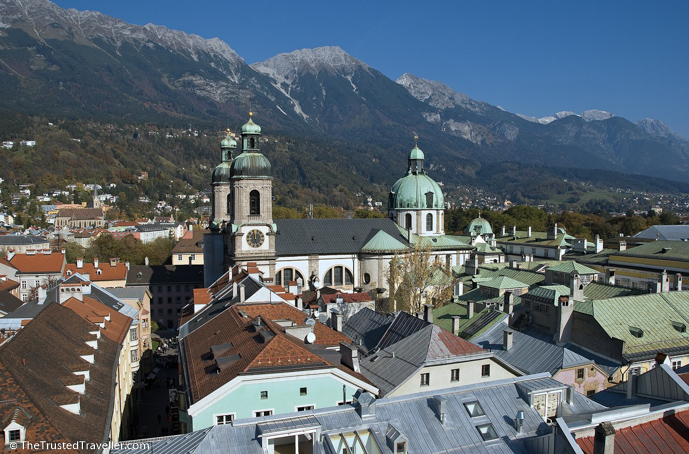
Getting There
Getting to Austria from surrounding European countries is simple, quick and cheap by bus or train. You can find out more about rail travel in Europe, including purchasing tickets, on the Rail Europe website; and about bus travel on the Eurolines website.
Austria is also well-connected by air with flights arriving in Vienna, Innsbruck and Salzburg from all across Europe and the UK and parts of the US, Middle East and Asia. A flight from London will take around two hours and a flight from New York about nine hours.
I use and recommend Expedia for researching and booking flights all around the world.
It is also possibly to arrive by boat along the Danube River from Germany , Hungary and Slovakia .
Getting Around
Austria is a relatively small country so getting around it is pretty simple and cheap.
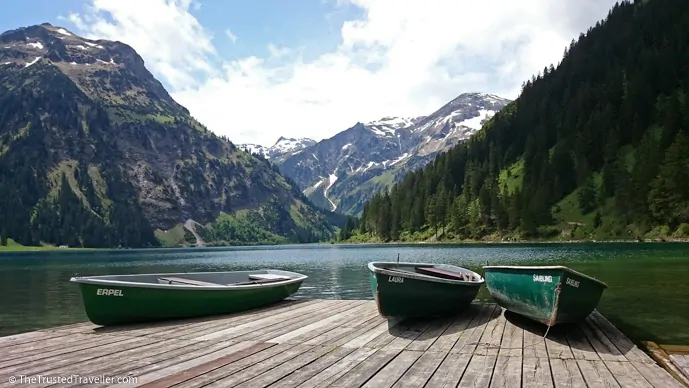
Europe’s excellent network of trains means that getting around Austria and in fact to/from other European countries is the most timely and cost-effective way to travel. All the major cities are connected to one another and you will find that most regional areas are well-connected to at least one of two of those major cities.
Because of Austria’s proximity to the Alps, some of the world’s most scenic train journeys can be taken through the country too making it more than just a means to get from point a to point b.
There are two classes on the trains, 1st and 2nd class, with the only real difference being slightly more leg space and room to move about in 1st class.
Most trains you can just show up at the train station and buy your ticket on the day while a few (mostly high-speed intercity trains) may need a seat reservation to be made in advance. This can be done either at any train station in the country or online through a ticketing agent in your home country. Here are a few that I recommend depending on where you are from:
- Rail Europe for residents in USA, Canada & Mexico.
- Rail Europe for residents in Australia, New Zealand, UK, Europe and other select parts of the world.
Eurolines operates services bus services around the country and they are a cheaper alternative to train travel but will take longer to get from a to b.
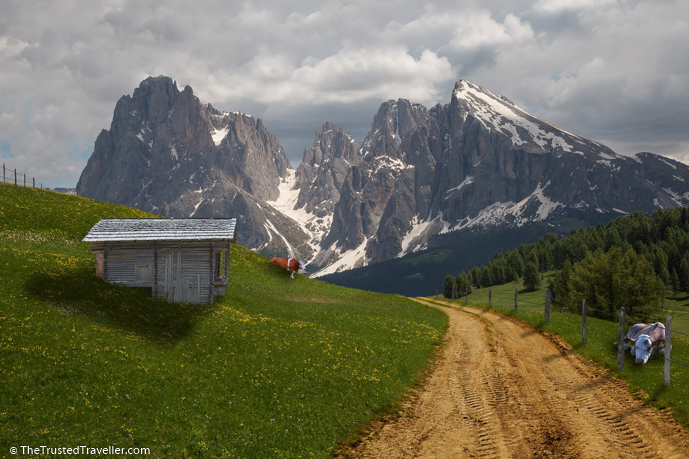
Because Austria is a small country, it is relatively easy to navigate if driving yourself.
You’ll be able to collect a hire car from all major airports and cities with most allowing you to pick up in one location and drop off in another, which makes sense if you’re road tripping around the country.
The road in Austria are well maintained and easy to navigate because they are well signposted. During the winter months remember that weather conditions can change rapidly especially on roads going through the mountains. Be sure to obey all signs and drive with care in slippery conditions.

Where to Stay
Austria caters for everyone when it comes to accommodation. Here is a list of the types of accommodation you’ll find:
- Camping/Cabins – With Austria being a very outdoorsy country you’ll find lots of camp grounds that offer tent sites and basic cabins as low costs. And as with a lot of other European cities, you’ll also find large camp sites on the outskirts of big cities like Vienna that you can stay at cheaply and commute each day into the city for sightseeing.
- Hostels – You’ll find hostels in abundance in the Austria’s bigger cities and one or two in most other regional areas as well. The level of cleanliness in Austria and similar parts of Europe is well above average so you will likely find your room and shared bathroom to be super clean.
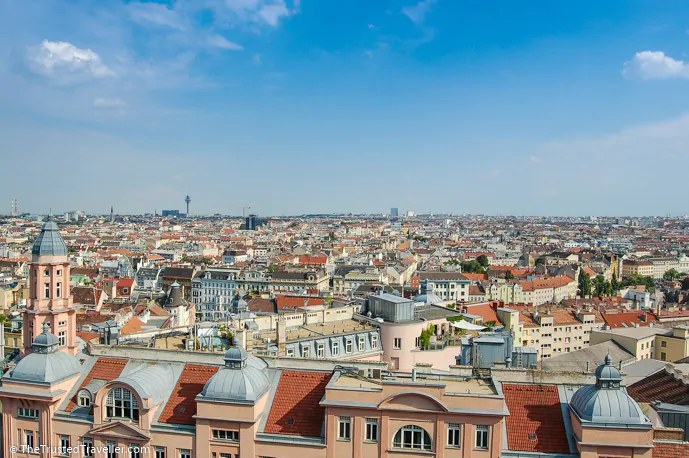
- B&B’s/Pensions – Small family run style accommodation like B&B’s or pensions can be found all over the country in big cities, small towns and popular rural locations. Accommodation is simple yet comfortable and the experience usually comes with friendly hosts and a home cooked breakfast each morning.
Get up to $45.00 AUD credit when you join Airbnb using this link .
- Hotels/Apartments – You will find both chain hotel/apartments brands and independent hotel/apartments to be in abundance in cities across the country. The good thing about this type of accommodation is in most cases you know what you are going to get, a clean, comfortable and modern room with a decent array of facilities in the room and on the property. Apartments are great for longer stays as they allow you a bit more space and the option to self cater.
I use and recommend Booking.com for researching and booking hostel, motel, hotel, apartment and resort accommodation around the world.

- Luxury Hotels & Resorts – Austria has its fair share of 5 star properties, some of which have been named in top lists of accommodation around the world. These will offer you brilliant service and a top location, sometime with incredible views of the surrounding area.
Austria has a variety of eating options that will suit all budgets and tastes. While you will find the majority of its restaurants and cafes serve local and European dishes, the country is expanding and becoming more multicultural with its cuisine offerings.
- Supermarkets/Markets – Save money and shop in supermarkets and local markets for snacks, picnic lunches and even ingredients to make a whole meal in your self catering accommodation.
- Fast Food / Take-away – Chain fast food stores are in all major centres of the country and along highways as well. If you’re looking for a cheap and tasty fast food meal, look to where the locals are, usually getting snacks and light meals from food trucks and stands on the side of the street. A popular street food snack is a sausage or hot dog and you’ll find stands selling them everywhere.
- Cafes – Austrian’s love cafes and some of the world’s most well know can be found in the country. Coffee, delicious sweets and tasty Austrian sandwiches will be on offer for sit down or takeaway.
- Restaurants – Portion sizes tend to be on the larger side in Austria so eating out in restaurants can be really good value. Consider sharing a meal with a travel companion if you’re not too hungry to save money or sticking to one course.
- Fine Dining – Austria has it’s fair share of the worlds best restaurants so if it is fine dining experiences you are after then you won’t be disappointed.

Useful Austria Posts
Suggested itineraries.
Exploring Austria by Car: A 5 Day Itinerary
First Timers One Month Europe Itinerary
Things to Do
Things to Do in Salzburg
Other Austria Travel Planning Resources
Here is a constantly growing collection of resources from around the web to help you plan you dream trip to Austria.
- The official Austria Tourism website is a great place to start planning your trip.
- The authority in all things travel, Lonely Planet has an extensive section all about Austria. Or why not buy the Austria Lonely Planet Guidebook in hard copy or as an eBook.
- Carly is an Aussie expat living in Vienna who writes all about life in Vienna, her travel across Austria and the rest of Europe on her blog Austrian Adaptation .
- Becki from Borders of Adventure spent most of 2017 discovering the best of Austria. You can read all about her adventures on her blog.
- Travel Tyrol is a blog by Linda who loves living in Austria and wants to share it with the world.
Leave a Comment Cancel reply
This site uses Akismet to reduce spam. Learn how your comment data is processed .
Austria Travel Guide
Alpine villages, crystal-clear lakes, mountain hikes, and delicious cuisine await you in this charming European destination.
Best time to visit Austria
Travel insurance for austria, best places to visit in austria, tyrol, austria: best things to do in kaiserwinkl, map of austria, weather in austria.
You can enjoy Austria’s beauty in every season. Summers are warm and sunny, perfect for outdoor activities. Fall brings colorful foliage and wine harvests, whereas winters are snowy, perfect for skiing. And spring blooms with fresh greenery.
How to Travel Cheap
How to plan a trip.
- Find Hotels via Booking.com
- Find Hostels via Hostelworld
- Find a Rental Car via Sunny Cars
- Find Cheap Flights via Skyscanner
- Get a Travel Insurance via Heymondo
- Book Tours & Attractions via Viator
- Book a Bus/Train/Transfer via 12Go
- Get a Visa via iVisa
- How to pack light for your trip
- How to plan your trip our tips
Why is Austria worth visiting?
Austria is a great travel destination with sky-high mountains perfect in either season, tranquil scenery, and incredible cuisine. From hiking, biking, skiing, or roaming through its Alpine villages, there are many things to do in Austria .
Is Austria cheap to visit?
Austria is a slightly more expensive destination to visit in Europe , though there are plenty of free activities. Expect to spend about $50 – $70 per day (budget) or $100 – $150 (mid-range), including accommodation, meals, transport, and activities.
Can I drink tap water in Austria?
Yes! Tap water is perfectly safe to drink in Austria. Stay hydrated by filling up a reusable water bottle on the go – a great way of traveling more sustainably.
Do I need a visa for traveling in Austria?
Most countries can travel visa-free for up to 90 days in Austria, as it’s within the Schengen area. As always, check your country’s travel requirements before traveling and make sure your passport is valid for at least 6 more months.
What language do they speak in Austria?
German is the official language of Austria, though the pronunciation often differs from its neighbor. Some Austrians also speak Croatian, Slovenian, or Hungarian, and most have a high proficiency in English, too – making it easy to connect with the locals!
Do I need travel insurance for Austria?
Travel insurance is your safety net for all your adventures in Austria, ensuring you have peace of mind while traversing its mountains and many beautiful lakes. It protects you against unexpected events, whether it’s lost luggage or an accident.
What power plug type does Austria have?
Austria uses two common European plug types: Type C and Type F. Type C is the plug with two round pins, and plug F has two round pins and two earth clips. Bring an adapter to stay connected during your trip.
Why do people love Austria?
There are so many great places to visit in Austria, from historic cities like Vienna to the stunning Alps. Soak up the Austrian culture , known for enjoying life, lots of art, strong coffee, lots of outdoor activities, and sports.
Travel to Austria
Traveling in Austria is like stepping into a live fairytale. Discover Vienna’s stunning palaces, where history always stands at the center, or visit Salzburg, the birthplace of world-famous composer Mozart and full of charming streets and lush gardens. Apart from beautiful cities, the natural scenery in Austria beckons many visitors. The Austrian Alps make a playground for many adventurers, with breathtaking vistas and thrilling outdoor activities. Spend your summer days hiking many trails between the bright green hills and lush forests, or visit in the wintertime to race down the slopes with skis.
How to Plan Your Trip to Austria
Follow our Austria travel guides to plan the perfect trip, either in summer or winter! Whether you’re looking to find hidden trails between the mountains of Tyrol, relax at peaceful lakes, or stroll through historic cities like Vienna, we’ve got you covered. Explore all the best places in Austria , or check out our complete guide to Kaiserwinkl .
Best Time to Visit Austria
Full of enchanting landscapes and many cultural treasures, Austria makes a great travel destination year-round. Whether you’re looking for the stunning colors of summer or winter wonderland, Austria offers it all.
Summers: The best time to visit Austria when you want warm weather , luscious scenery, and nature in full swing is from June to August. Austria blooms in various colors during this time, with Alpine meadows full of wildflowers and crystal-clear lakes perfect for swimming. Lazily roam through the little villages, cycling or hiking between the majestic Austrian Alps. Many outdoor events also take place during this time, from live concerts to vibrant open-air markets, giving the country lots of energy.
Winter: If you’re a snowsporter, visit between December and February, when thick snow blankets the land. During this time, Austria transforms into a real-life snow globe. Cities fill up with atmospheric Christmas markets, and some of Europe’s finest slopes (in the Austrian Alps) are open. Cozy up in mountain chalets, savoring après-ski delights, and head out onto the icy runways.
Mountains and Lakes
Austria is full of natural wonders that all create a stunning canvas of diverse landscapes. The Alps, with towering peaks and lush valleys, are the perfect playground for outdoor lovers. During the summer, this makes a great addition to your Austria holiday if you want to do some hiking, biking, rafting, or swimming.
Wander through the many forests and meadows, and visit dramatic national parks with canyons and pristine rivers. The Danube River Valley, for example, unfolds in beauty, ideal for bike rides or picturesque cruises. Wildlife thrives in these parts, and Austrian forests see deer, ibex, and golden eagles.
In the winter, the climate transforms Austria into a snowy landscape, offering world-class ski resorts in Tyrol , Salzburg, and Vorarlberg with great slopes and exciting descents. The quaint mountain villages become cozy retreats, where hearty meals and warm glühwein await after your day out in the snow.
Food, Culture, and Religion in Austria
Austria’s cuisine, culture, and diverse religion prove the country has a rich history. Around every corner, you learn something new. One of the best things to do in Austria is to explore its rich traditions, flavors, and beliefs.
Cuisine: From the iconic ‘Wiener Schnitzel’ to heavenly desserts like ‘Apfelstrudel’ and ‘Sachertorte’, there is a lot to try in Austria when it comes to food. Though sometimes rather meat-heavy, there are also lots of options for vegetarians. Stop at one of Vienna’s coffeehouses to get a taste of old-world elegance, or explore the little taverns in the mountain villages dating back many years.
Culture: At the center of Austria’s cultural heritage stand its history and artistry. You see it in the majestic palaces and castles that show imperial splendor, as well as in the Opera and the Musikverein concert hall. Apart from its architecture, traditional villages like Inssbruck reveal the charm of Alpine life, where herders take care of their cattle and life moves slower.
Religion : Austria’s religious landscape is quite diverse. Christianity is the predominant religion, where Catholics shaped the country and make up most of the population . Nevertheless, the country embraces different faiths, including Protestantism and Islam.
Why You Should Travel to Austria
A realm where history and natural beauty come together in perfect harmony – that’s Austria. Explore imperial cities like Vienna that’ll transport you back in time and the breathtaking landscapes of jagged peaks and serene lakes in the Alps. Combine this with hearty meals in classic eateries and elegant coffeehouses, and you’ve guaranteed a fantastic Austria holiday .
Enjoy an iconic Apfelstrudel as you look at historic palaces, only to hike Alpine trails and cruise the Danube later. Austria manages to captivate with its timeless elegance and warm hospitality. It’s a land where every corner reveals something new about its history, cuisine, and people, making it a worthy destination in the sun or snow.
Safety and Travel Advice in Austria
Natural disasters: Though the risks of natural disasters are relatively low, predominant floods, avalanches, and landslides can happen in Austria. Stay informed by monitoring local and international news and register at your embassy for emergency updates on your trip.
Crime and safety in Austria : Crime levels in Austria are generally low, though petty crime, like pickpocketing, can happen in the big city centers and parks after dark. Keep your valuables secure by carrying them on the front and never leave them unattended. Take especially care on international trains.
Learn more about travel safety
Outdoor activities: With its lush scenery, Austria makes an outdoor paradise. However, hiking, mountaineering, and other adventure sports can always be risky. Always check if the company you go with is well-established and that you have insurance to cover your desired activity. Familiarize yourself with local laws and regulations for a stress-free trip.
Travel Insurance: One of the things we always recommend for your vacation in Austria is to purchase travel insurance. Whether it’s unforeseen accidents or lost personal items, travel insurance provides peace of mind, ensuring a smoother and worry-free experience. Check out these best travel insurances .
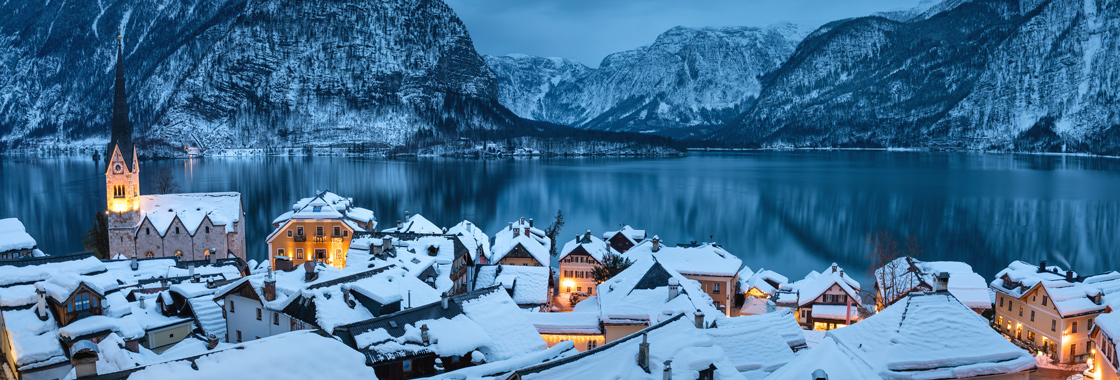
the ultimate travel guide to Austria
Situated in the heart of Europe, Austria has seen many a traveller lured by the country’s stunning architecture, breathtaking nature (especially during ski season) and unique food and wine scene. Welcome to our Austria travel guide.
Dripping with history, capital city Vienna is part of most traveller’s Austrian itinerary.
Get your bearings by walking Vienna’s Ringstrasse . While many will argue that the grandeur of the Champs-Élysées can not be rivalled anywhere in the world, its hordes of tourists and crass retail make the Paris centerpiece an underwhelming experience. By contrast, the Ringstrasse has altogether more charm. A sophisticated marvel of modern civic planning, design and architecture, the Ringstrasse is unmatched in beauty and drama.
With a small tributary running through the city centre, the Donau (Danube) is a popular place to hang out in Vienna, especially during the summer months where there are a number of beach bars to enjoy.
Then there is Salzburg . This medieval Austrian city is dripping in Baroque architecture. It was the birthplace of Mozart and setting for The Sound Of Music. Walk around and take in the scenery of the historic Old Town, or if you want something a little more challenging walks up the hills Mönchsberg or Kapuzinerberg and enjoy the views over the city. There are also some outstanding local beers and breweries to be enjoyed in Salzburg and it’s a great place to experience an ice hockey match (or a traditional thermal spa) .
The fairytale town of Hallstatt , nestled quietly in the Austrian Alps about one hour south of Salzburg, has been dubbed “Europe’s most adorable town”.
A day spent wandering around the World Heritage-listed town and market square, indulging in the astounding beauty of the architecture and the cute cafés dotted along the cobblestoned lanes will leave you slack-jawed.
If you’re travelling between Liechtenstein, Austria and/or Switzerland, Feldkirchen in Kärnten is worth a stop. This charming medieval town is home to an ancient 13th-century castle that sits atop a hill and houses a local history museum and a restaurant with views over the town.
If you want to get off the beaten track (and you’re a design buff) Voralberg should certainly be one of your stops. This lesser-known region celebrates craftsmanship in all forms.
Austria is also paradise for snow bunnies. In fact, St Anton is considered the best ski resort in the world. The town of Innsbruck is a great place to base yourself if you are this way inclined. During the cooler months, the area is a haven for skiing enthusiasts and famous for its delightful wintertime atmosphere
Being just minutes away from the mountains means there’s a bounty of sports and activities readily available, such as hiking, mountain biking, climbing, skiing, ski touring, snowshoeing and tobogganing.
Innsbruck also has a beautifully conserved Old Town and offers stunning alpine scenery. Modern architectural highlights include the Bergisel Ski Jump.
Another great place to visit is Graz. It has a mix of old buildings and innovative architecture and is considered Austria’s culinary capital. Gourmet delicacies and wine are produced in this region and are featured in many top-quality restaurants in the city.
Top Destination In Austria
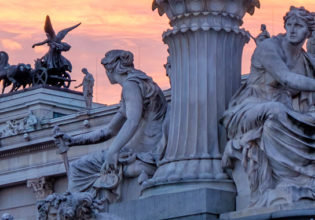
More On Austria
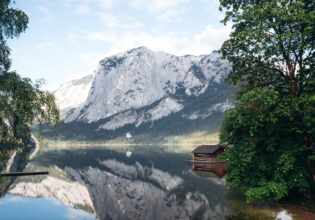
Your guide to Salzkammergut, Austria
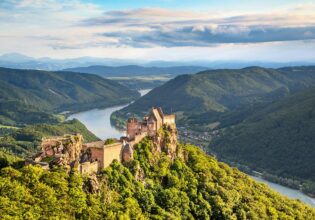
5 places in Austria you need to visit outside the main cities
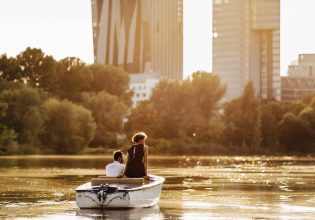
Your guide to eco-friendly eats and top things to do in Vienna
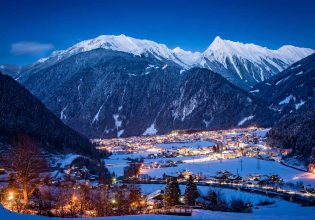
Austria’s 8 best ski resorts
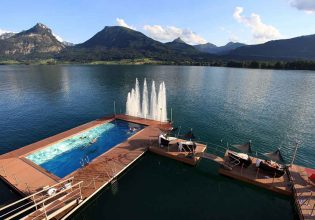
The 14 best places to stay in Austria (for Aussies)
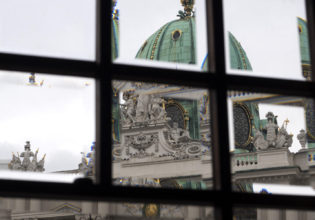
Vienna culture: discover the city’s most fascinating era
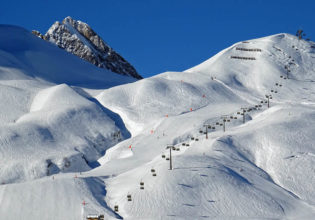
The verdict is in: This is the best ski resort in the world
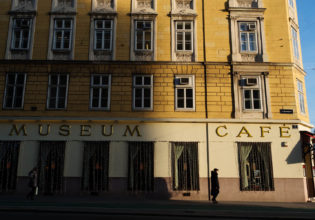
7 ways to see Vienna like a true 20th-century artist
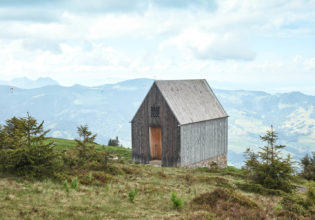
The design-forward Austrian region you’ve never heard of
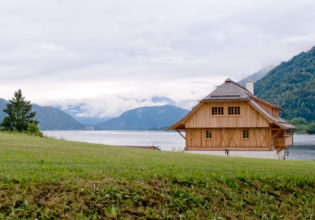
83. Feldkirchen in Kärnten, Austria
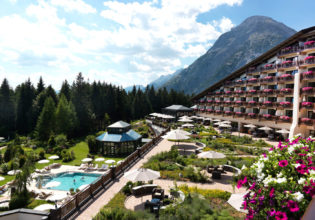
The best boutique hotels in Innsbruck and the Arlberg
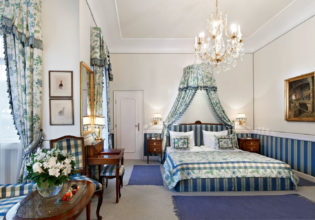
Your guide to Salzburg’s best boutique hotels

Review: 25hours Hotel Vienna
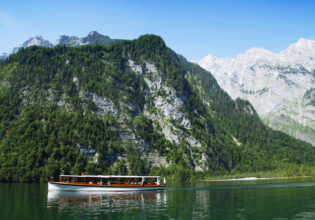
Five uniquely Salzburgian experiences
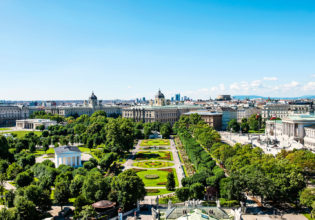
Walking guide to Vienna’s famed Ringstrasse
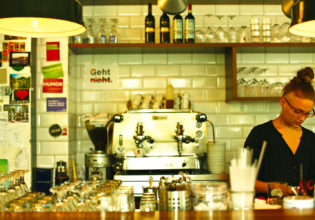
Vienna’s Top Coffee Houses
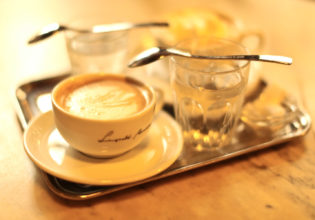

Coffee Lovers’ Guide to Vienna
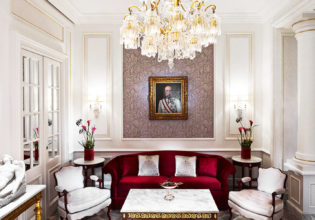
Hotel Sacher: a taste of opulence
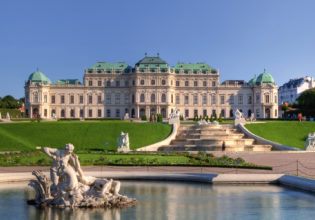
Vienna; in all its fascinating and frustrating glory
Explore more european & uk destinations.
- Netherlands
- Switzerland
- United Kingdom
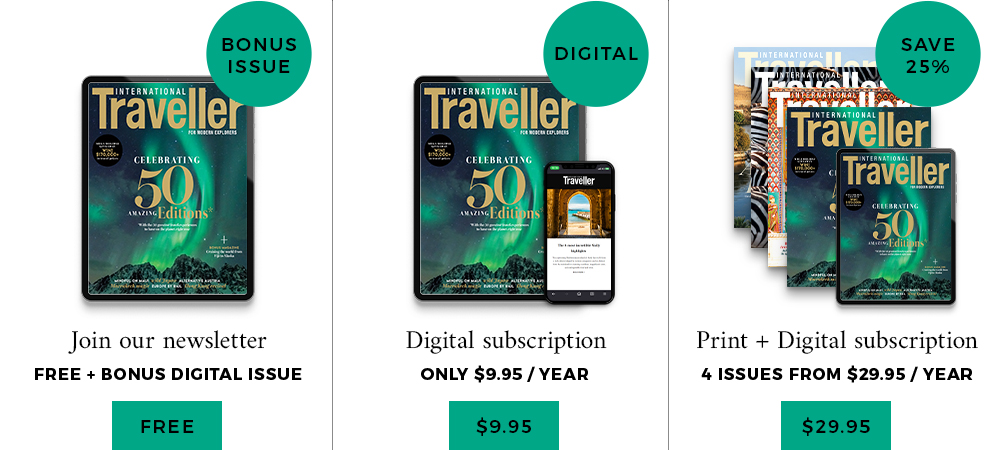

The ultimate Austria travel guide: the best things to do and see
The best trips to Austria are multi-sensory adventures that include transporting music, intriguing history, delicious cakes , and postcard-worthy nature. This small Central European country may not have the same travel reputation as its more popular neighbors like Italy and Switzerland, but Austria—often considered one of the best countries to live in—is just as culturally rich. Read on to learn more about the best things to do in Austria, what to see in Austria, the best time to visit Austria, and much more.
The best time to go Cities to visit What to see What to eat and drink What to do Souvenirs to buy What to pack
Currency: Euro
Language: German (but English is widely spoken)
UNESCO sites: Austria is home to 12 UNESCO World Heritage Sites, including the historic cities of Salzburg and Vienna. Schönbrunn Palace and the 25-mile Semmering railway are also two top things to see in Austria.
Best way to get around: Transportation into and within Austria is fantastic. Vienna, its capital, has a major international airport that connects to many of the world’s biggest cities, and an extensive train network makes traveling all over the country that much easier. Metros and trams are regularly used in the bigger cities; while most Austrians are very comfortable riding their bikes to quickly zip around town. Because the Danube River runs through most of Austria, enjoying a river cruise is also one of our favorite Austria travel tips.
Fun fact: Austria borders eight European countries: Germany, the Czech Republic, Slovakia, Hungary, Slovenia, Italy, Switzerland, and Lichtenstein. What does this mean for travelers? Well, if you’re wondering how to plan a trip to Austria, you may want to consider a multi-country European tour. It would be very easy to partner a tour of Austria with any of the countries above, plus other wonderful destinations in Europe.

Explore our tours

4.7 out of 5 stars

4.6 out of 5 stars
More travel inspiration


Austria Travel Guide – Practical information to plan your trip
Sofie's article on how to spend a week in Austria in winter helped me plan my own trip there. – Reader Anubha
Want to plan a trip to Austria? Great! This Austria Travel Guide will help you do just that.
Austria is located in Central Europe and shares its borders with the Czech Republic, Germany, Hungary, Italy, Liechtenstein, Slovakia, Slovenia, and Switzerland. It is the 20th largest country in Europe and is a founding member of the OECD and a member of the European Union and the United Nations.
Austria is a very popular tourist destination for a multitude of reasons. For music and film lovers, it’s the home of Mozart, Schubert, and the iconic film The Sound of Music. Culture vultures can indulge in the decadent and exquisite architecture of the capital Vienna and the second city of Salzburg, but it’s when you get out of the cities that Austria really gets exciting.
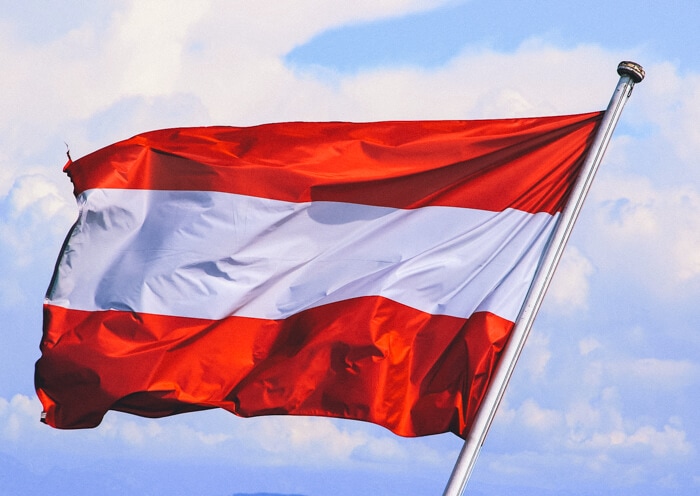
In Summer, the rolling hills and alpine valleys of the Austrian Alps not only offer beautiful views, but become playgrounds for paragliding, rafting, and a whole host of adventure sports. In the winter months, it’s one of Europe’s favorite snowboarding and skiing destinations. Visiting Austria offers plenty of things to do for all kinds of travelers.
Check out this Austria Travel Guide to full of practical tips to plan your own trip to Austria.
Austria travel guide: quick facts
Austrian states, entry requirements, fly to austria, independent travel around austria, where to stay in austria, what to pack for austria in summer, what to pack for austria in winter, what to pack for austria in fall, what to pack for austria in spring, the best time to visit austria, 10 of the biggest events in austria, public holidays in austria, what to eat and drink in austria, cultural customs to be aware of in austria, don't forget travel insurance, basic phrases and their pronunciation, safety in austria, the use of cash and cards in austria, calling abroad, wifi and data use in austria, tipping in austria, books about austria, a brief history of austria, posts about austria.
Size: 83,879 km² or 32,385.86 sq mi
People living there: more than 8,620,000
Capital city of Austria: Vienna
Governmental structure: federal republic with a parliamentary representative democracy comprising nine federated states
National day: October 26
Time zone: Central European Time / UTC+1 / GMT+1
Currency: euro (EUR)
Power voltage and socket type(s): 230V, plug types C and F. If these don't match with your devices, make sure to bring a universal adapter .
Official religion(s)/Freedom of religion: Freedom of religion. 3/4 of the population is Roman Catholic, followed by non-religious citizens, Protestants, Muslims, and Orthodox Christians.
Official language(s) and general knowledge of English: German is the official language. Engish is widely spoken in the bigger cities and at hotels but in the countryside, there are people who'll only speak German.
Drives on this side: right
International driver's licence accepted? yes
Area code of Austria: +43
Can you drink the tap water? yes
Vaccinations needed? no
Austria is divided into nine different states or Bundesländer which all have their own government and capital.
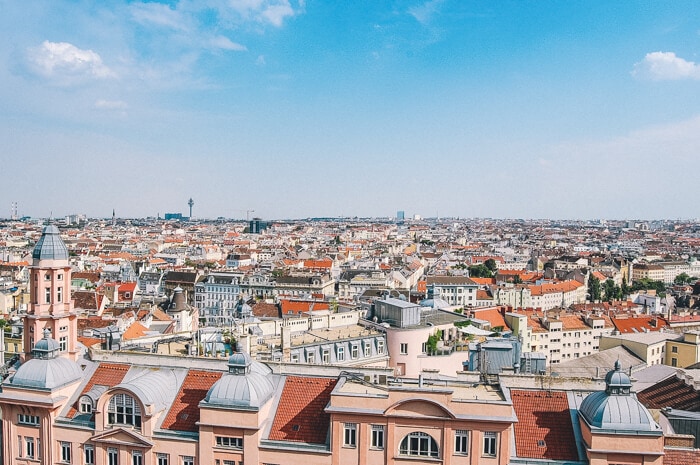
Vienna is also one of the best places to visit in Austria if you like classical music. It's known as the “City of Music” because of its big classical music scene as well as the former home of composers such as Johannes Brahms, Wolfgang Amadeus Mozart, Joseph Haydn, and Ludwig van Beethoven.
It's also known as the “City of Dreams” as it was where Sigmund Freud first developed psychoanalysis. You can read more about Freud and his contemporaries who developed modernism in Vienna in this post .
Its magnificent architecture makes Vienna a free outdoor museum with historic buildings such as the Schönbrunn Palace topping the list of things to see in Vienna. While numerous actual museums focus on various branches of the arts.
It's a city where the past is still very much present, with over 450 19th-century balls taking place every year and plenty of Viennese cafes in the historic center that have a history dating back well over a century.
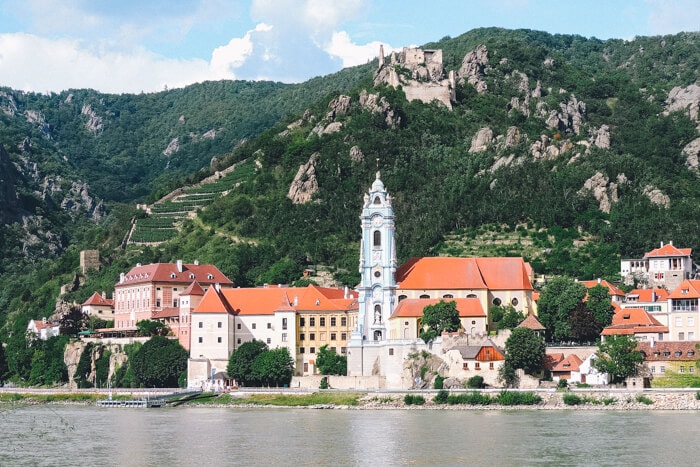
The state capital Sankt Pölten is home to various museums about the region.
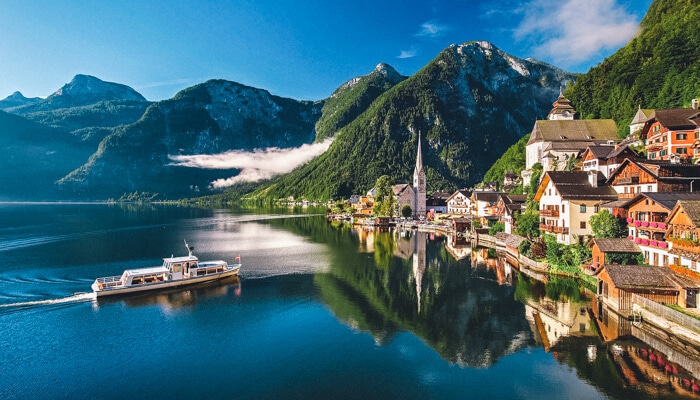
Its capital Linz is the third largest city in Austria, located just 30 km from the border with the Czech Republic. Its known for the Linzer Torte , said to be the oldest cake in the world with a recipe dating back to 1653.
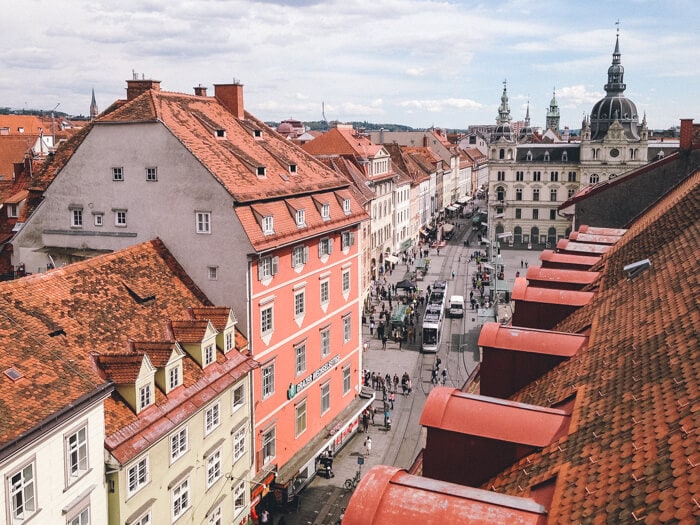
For those who are feeling less active, there are wellness centers that combine natural treatments with the newest of applications.
The state capital of Graz is one of the cities to visit in Austria, being the second largest city in the country. Its historical, old, pictureque town is a UNESCO World Heritage Site.
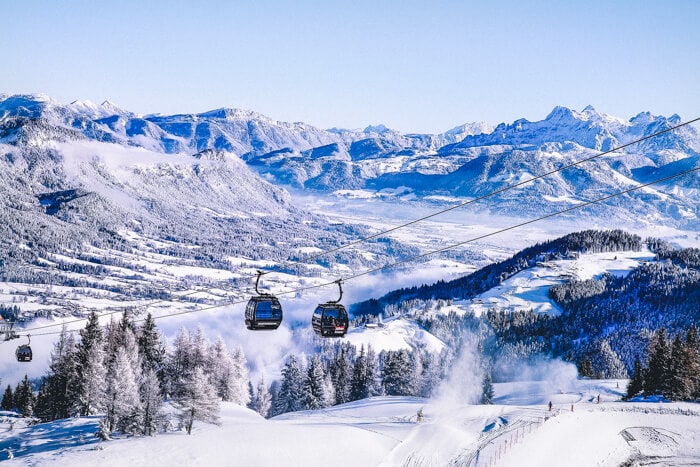
While great for outdoor activities in summer as well , Tyrol is mostly known because of ski resorts such as Kitzbühel, Mayrhofen, St. Anton, and the very family-friendly Serfaus-Fiss-Ladis .
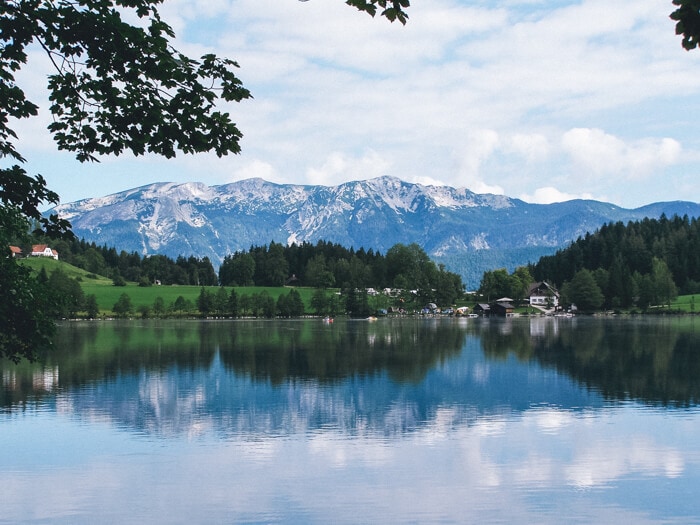
The hilltop fortress of Hochosterwitz is a popular sight and in summer, I recommend mingling with the locals at one of the many folk festivals held in the villages.
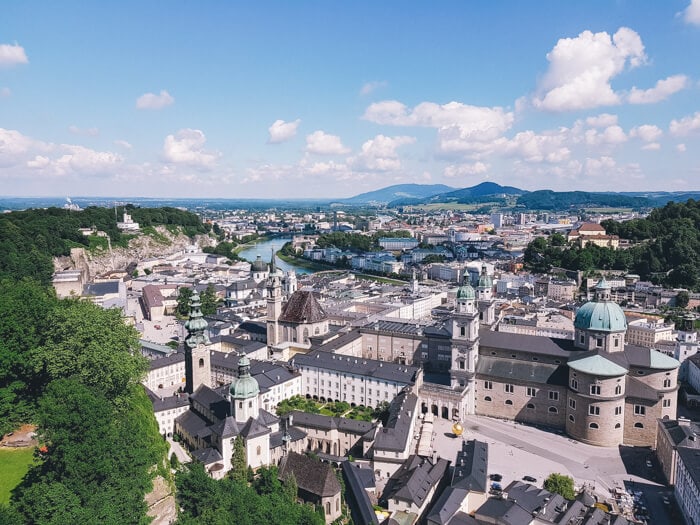
Just like most of the rest of Austria, Salzburgerland offers plenty of outdoor activity options both in summer and in winter. It's also home to the Eisriesenwelt, the largest ice cave in the world. In my opinion, it's one of the best places to see in Austria as it's located high up on a mountain with amazing views of the surroundings.
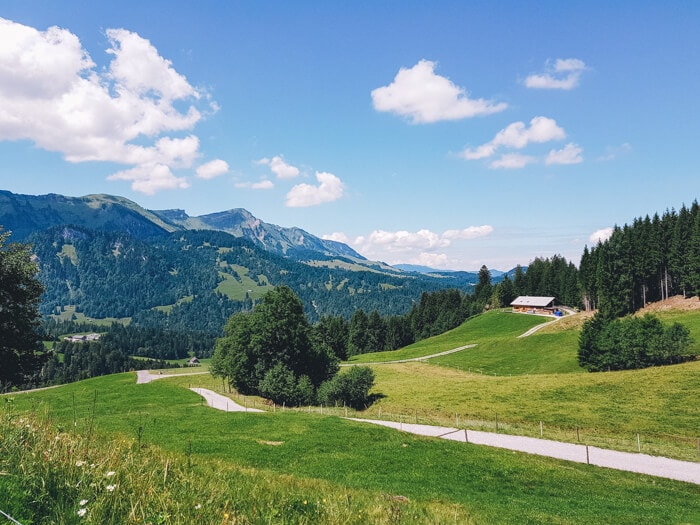
Also popular are the UNESCO biosphere reserve Grosses Walsertal, the state capital of Bregenz and the beautiful Lake Constance.
- Fun things to do in Bregenz, Feldkirch, and Dorbirn
- How to send fun days in the Bregenzerwald
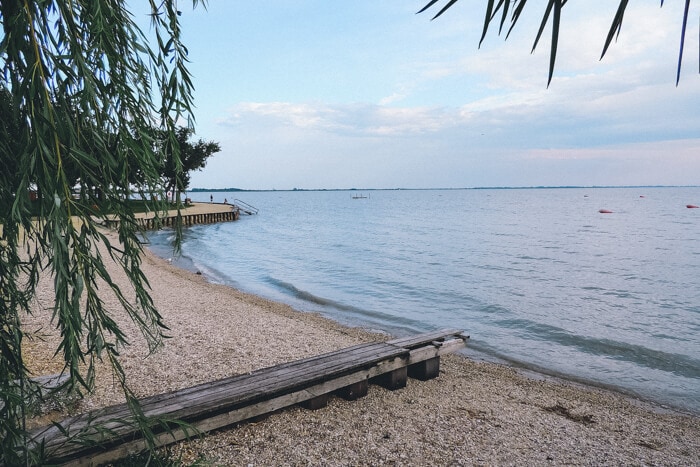
How to travel to Austria
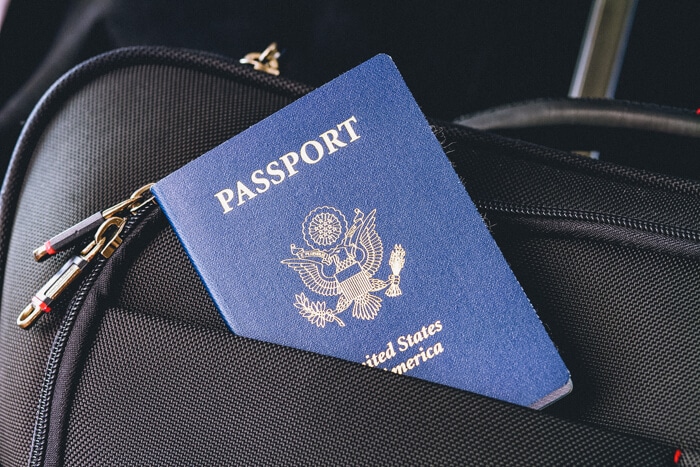
US and UK travelers also do not need a visa for a stay up to 90 days, but it is necessary to have a passport with at least 6 months of validity remaining.
Transportation
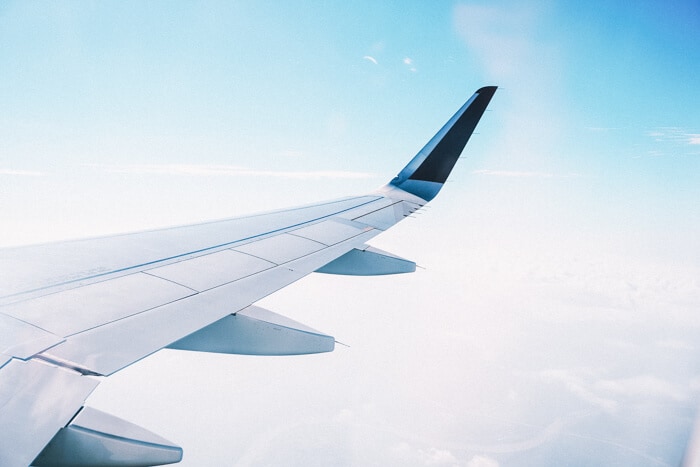
You can travel into Austria by bus from all its eight neighboring countries. However, because Liechtenstein is so small, there’s currently only one crossing per day. Eurolines, Busabout, and ÖBB Intercity buses are the biggest companies which offer international travel in and out of Austria. Flixbus is also a known name and probably the cheapest.
Austria’s main hub for international bus travel is the Vienna International bus terminal (VIB), and it’s open year-round.
Austria has excellent rail connections with all neighboring countries and passengers do not need to get off the train when crossing over. However, it’s essential that to ensure that you have all essential documentation for your onward destination.
Vienna Meidling is the most important national and international rail station in the country.
Check here for train routes and prices within Europe.
Although Austria is landlocked, it’s possible to enter by ferry on the Danube River. Twin City Liner and LOD offer travel between Vienna and Bratislava, whereas DDSG Blue Danube offer services between Budapest and Vienna. All of these services are seasonal and do not run in the winter months.
Check here for ferry routes and prices.
There are 6 international airports in Austria, with the largest being Vienna International Airport (Flughafen Wien). From Vienna, you can fly directly to other destinations in Europe, as well as North America, Asia, and Africa.
For European travelers visiting Vienna especially, it can be cheaper to fly into Bratislava airport (Letisko) in Slovakia and take a train 60km west to the capital.
Check Skyscanner for a good overview of your flight options and the best prices. Skyscanner lets you set flight alerts for your destination and shows you which month the prices are lowest. Very handy!
How to travel around Austria
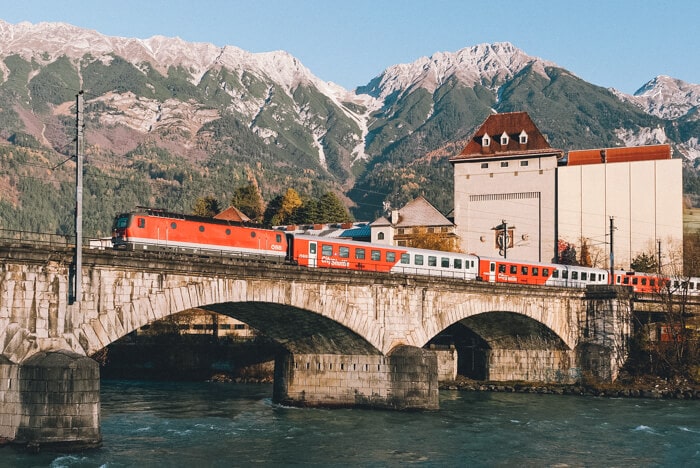
Austria is not only a very easy country to travel around in, but it’s also considered one of the safest in the world for solo travel. It has an excellent rail network and riving in Austria, for tourists, isn't dangerous or hard at all either.
When you plan on visiting just the cities, train travel is the way to go but if you want full flexibility when heading into the mountains, a rental car is recommended although most places also have an excellent bus network.
If you're thinking of getting a rental car in Austria, Rentalcars.com is a good site to check . It compares hundreds of car rental companies to make sure you get the best deal based on your search criteria.
You find a range of accommodation options all over Austria , from budget hotels to family-run mountain hotels and luxury resorts.
Check Booking.com for a wide selection of hotels at the best prices.
What to pack for Austria
Austria is found in a temperate climactic zone, and there are slight variations between the North and South of the country. The Alpine climate is the most unpredictable, and if you’re traveling at altitude there’s no time of the year that you shouldn’t be prepared with cold-weather gear.
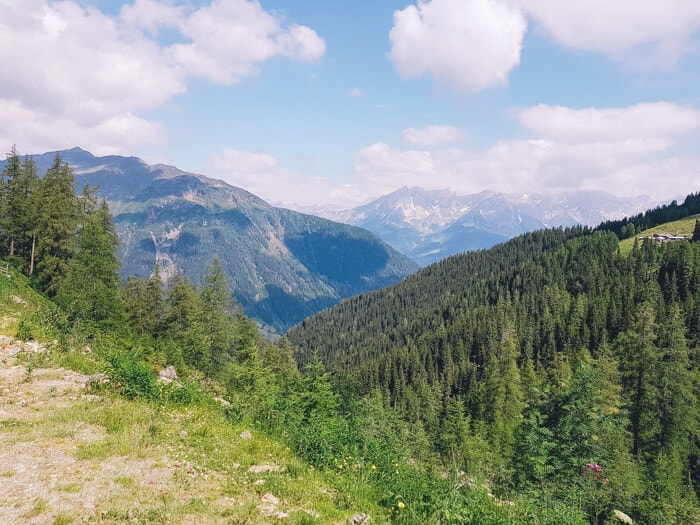
There can be thunderstorms all over the country, but these are more common in mountainous areas. It’s still better to be prepared though, so bring rain protection to keep you dry.
Essentials:
- a light raincoat
- walking boots/shoes
- light cotton clothing
- swimming gear
- a reusable water bottle
Also check out my detailed guide for what to wear in Austria in summer .
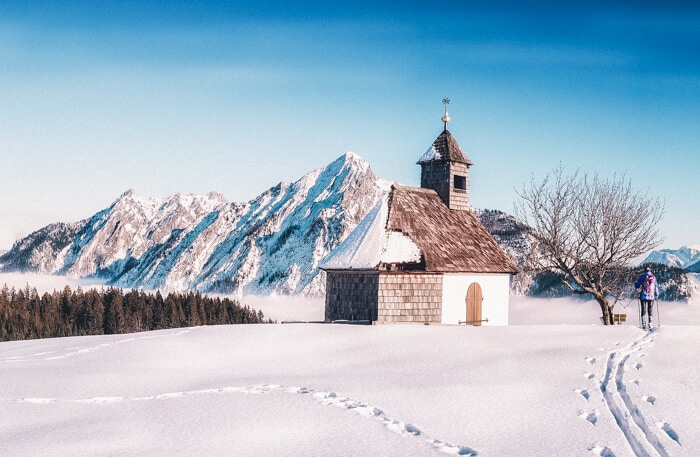
There have been times when the temperature has dropped as low as -20 degrees Celsius, but this is extremely rare.
- a warm water- and windproof coat
- a merino woolen baselayer
- merino woolen socks
- a fleece top layer
- waterproof snow boots
- merino woolen leggings to wear underneath your ski or regular pants
Check out my guide on what to wear in Austria in winter for more detailed information.
Fall is cool in Austria, but sometimes an Indian summer means that temperatures can exceed 30 degrees Celsius in September. As the year progresses into October, temperatures can drop below freezing at night and mist and fog becomes frequent.
- a rainproof jacket
- layered clothing
- comfortable shoes
- thin merino woolen socks
Like fall, spring is usually quite cool in Austria, and sometimes April can be especially cold. At night, temperatures sometimes drop below freezing and snowfall is not unheard of. Temperatures in May are usually pleasant and around this time there is an increase in tourists. Depending on which month you’re visiting, there will be parts of both your summer and winter suitcases that are necessary.
Essentials: same as for fall.
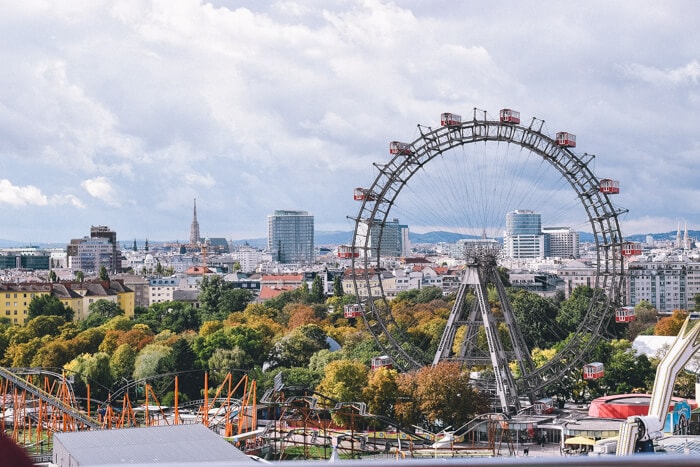
For city sightseeing and outdoor activities such as hiking, biking etc. the best time to visit is between May to September. Austria’s summer peak is in July and August. At this time, the weather is sunny and warm, but it’s also the most crowded. May, June, and September offer lower airfares and fewer crowds.
Austria also has a lot of cultural events worth coming for which aren’t always in the tourism high season. Take a look at the 10 of the biggest events in Austria below, and think about planning your trip around any which pique your interest.
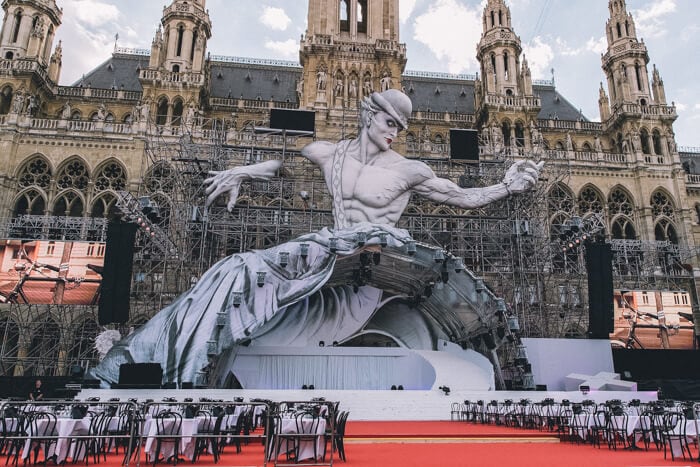
- Winterfest Salzburg
- Glatt & Verkehrt Festival in Krems
- Snowbombing, Mayrhofen
- Hahnenkamm World Cup Ski Race in Kitzbühel
- Salzburg Festival
- Donauinselfest in Vienna
- Linzer Klangwolke in Linz
- Vienna Jazz Festival
- World Bodypainting Festival in Klagenfurt
- Mozart Week in Salzburg
Also very popular are the many balls still held in Vienna to this day. You might not be able to attend one but you can always learn to Waltz dance in Vienna , like I did.
And for a real countryside experience, you can go to an Almbatrieb , the event where every start of the fall, farmers walk their beautifully decorated cows down from the mountains into the valley for winter.
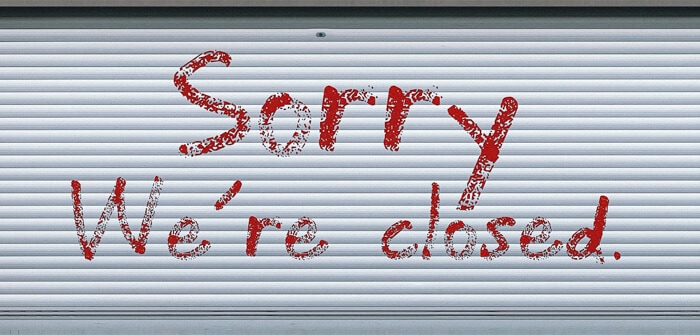
On the following holidays, most Austrian government offices and businesses are closed.
- New Year's Day
- Easter Monday
- Labor Day (May 1)
- Ascension Day
- Pentecost Monday
- Corpus Christi
- Assumption of the Virgin Mary
- National Day (October 26)
- Immaculate Conception (but retail stores are allowed to open)
- Christmas Day
- Second Christmas Day

Save money by eating at local places and buying groceries at local markets. Here are some tasty Austrian treats to try:
Wiener Schnitzel – Probably Austria’s most popular culinary export, wiener schnitzel is a cutlet of veal covered in breadcrumbs before being fried in butter or oil. It’s easy to find in restaurants all over the country.
Kaiserschmarrn – Austria’s take on pancakes, these are often very rich and eggy. Expect them to be served with preserve or fresh fruits.
Schlutzkrapferl Tris – A delicious take on ravioli, this is a fine dish, but it can be heavy and rich.
Kaspressknödel – Austria’s take on the dumpling. Pan fried and sometimes put in the oven, they’re usually filled with cheese. Enjoy them served in a soup or with a salad.
Tiroler Gröstel – Traditionally, this is a hearty meal made up of leftovers. Served in a pan, it’s a mixture of potatoes, onions, bacon, and paprika or chilli powder, with a fried egg served over the top.
Erdäpfelsalat (Austrian-style potato salad) – This potato salad doesn’t use mayonnaise, and instead relies on a dressing of vinegar, mustard, chives, red onion, salt, and pepper. Vegetarians and vegans should always check if this dish is suitable, as it sometimes includes chicken or meat stock.
Apfelstrudel (Apple Strudel) – Not only loved in Austria, apple strudel is a more delicate take on an apple pie, made with light and crispy pastry dough that melts in the mouth.
Sachertorte – this delicious chocolate sponge cake is a symbol of Austria, the capital city in particular. Inside are thin layers of apricot jam, before it’s topped with chocolate icing.
Viennese Coffee – Vienna is one of the coffee capitals of Europe, with many versions that you can only find here. Try a melange, which is similar to a cappuccino.
Schnaps – Austria’s national alcohol, schnaps comes in many different flavors. Schnaps tastings are great fun, but it’s very strong!
If you want to know which of these I've already tried myself (and have written about), check my Austria blog on foods .
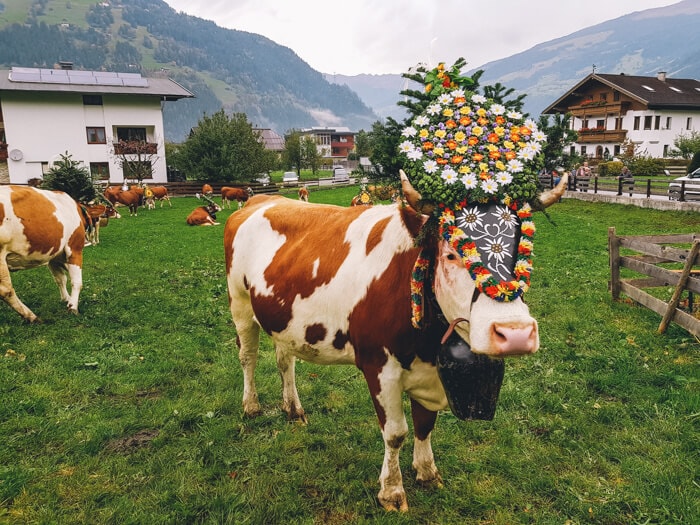
Austria is generally a safe country to travel to but there's always the risk of cancellations, getting ill, petty theft or breaking your electronic gear while you're traveling there. When those things happen, travel insurance has got you covered.
I've had ongoing travel insurance ever since I started traveling to make sure I'm covered for every trip I go on.
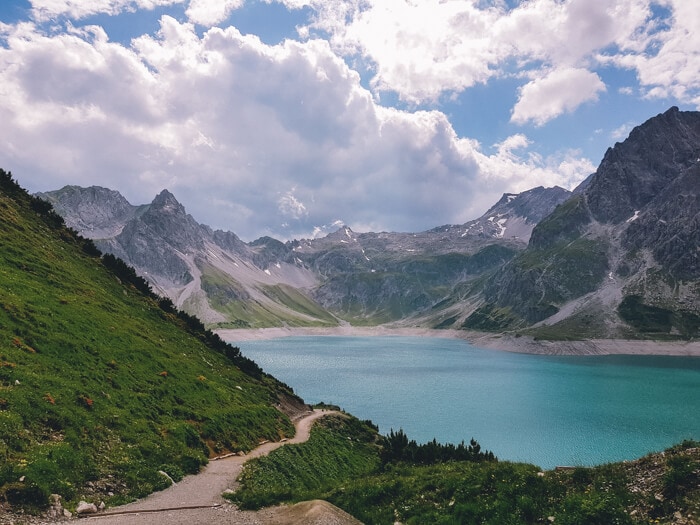
Austria is one of the safest countries for both living and traveling as it has one of the lowest serious crime rates in the world. However, pickpocketing and bag snatching is high in areas where there are lots of tourists, such as busy squares and train stations. It’s important to take precautions and be alert when you’re out and about.
Also, for skiers and snowboarders, it’s important to have the correct clothing and equipment. There’s a low risk of avalanches, but they do happen. Always be sure to follow the safety tips at the resort you're doing your wintersports.
Plan for the best, prepare for the worst. Travel insurance has you covered in case (part of) your trip gets canceled, you get sick or hurt abroad, and sometimes even when your electronics break or get stolen. I always make sure I'm covered every trip I go on.
Don't have travel insurance yet? Check out SafetyWing. They offer super flexible plans that you can even sign up for while you're already on your trip. On top of that, they were the first travel insurance to cover COVID, and when I got COVID, they reimbursed all of my expenses without making a fuss. Their customer support team is great and I can personally recommend them.
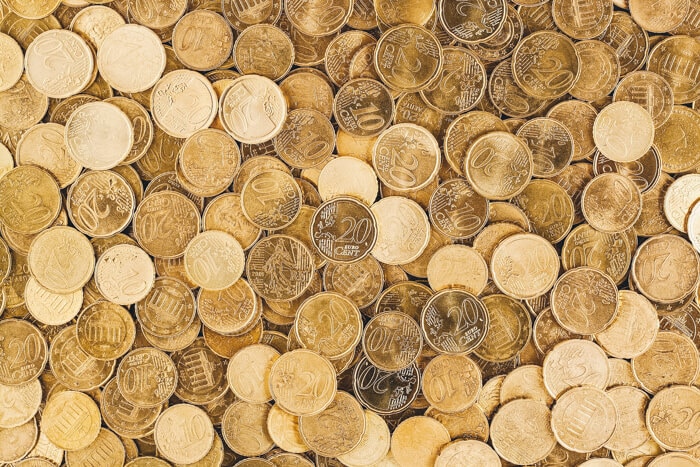
When using your card, whether it’s to withdraw cash or buy something, don’t be fooled by DCC (Dynamic Currency Conversion). It will offer you the chance to convert the amount into your home currency, but this often comes with hidden charges, sometimes up to 4% more than without the conversion.
Although you can change your money in airports, banks, hotels, or shops, these can leave you short-changed. If you're wondering where to go in Austria for the fairest rates, Change Group, Interchange Austria, and Western Union International Bank are your best bets.
Those with a SIM card from an EU country don't have to pay roaming charges when calling, texting, or using data in Austria. The same goes for some global phone plans.
If you want to know what you're paying at all times and be sure of a connection, check out Solis Wifi.
Skyroam offers both day passes and monthly subscriptions providing you with 4G on your trips. I've been using their daily passes not just when I travel outside the EU (no roaming charges for me in the EU) but also as a backup for when I think I'll go over my phone's data plan.
Sounds interesting? Use my code WONDERFULWANDERINGS to get 10% off your order. Check out Solis Wifi here
While tipping in Austria is quite common, it's not obligatory and the tips tend to be a bit less high than in, for example, the US as most services include a service fee. Read more about who to tip what and when here .
Want to know even more about Austria? Check out my selection of five books about Austria . They're quite diverse and give insights into various aspects of Austria's history and culture.
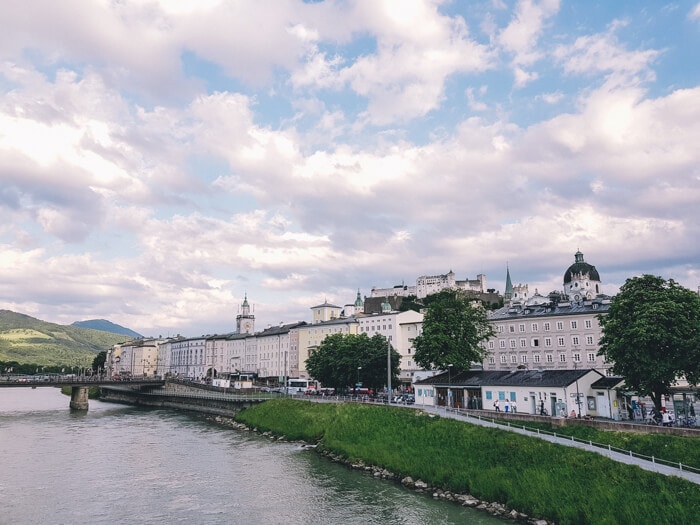
1st century BC – 45AD – Romans conquer the region and introduce roads. They built Vindobona, which later went on to become Vienna.
768 – 814 – Charlemagne conquered Austria and it became part of his empire before it was split into three parts after Charlemagne’s death.
955 – The Magyars (from Hungary) were defeated by King Otto I of Germany, who re-took control of the region.
1156 – The Holy Roman emperor appointed a Duke and Austria became a Duchy.
1273 – Rudolf von Habsburg became the Holy Roman Emperor. The Habsburgs went on to rule Austria for the centuries and acquired a huge empire within Europe.
1438 – Albert the 2nd, who was the Duke of Austria as well as being the King of Hungary and Bohemia, became the Holy Roman Emperor, meaning that Austria became the dominant European power.
16thcentury – Although the majority of the nation were peasants, the Empire was prospering as trade and commerce were booming.
1618 – 1648 – The Thirty Years’ War destroyed much of the Habsburg Empire.
1701 – 1714 – The war of Spanish succession ended with Austria claiming Sardinia and parts of Italy for their empire.
1806 – Austria gave up the title of Holy Roman Emperor, as Napoleon had dissolved the Holy Roman Empire.
19th century – Many people were unsatisfied with Austrian rule – especially Czechs and Hungarians. This led to increasing nationalism in the Austrian Empire.
1866 – Austria lost a war to Prussia after losing to France in 1859. It lost its position as the most dominant force in Europe to Prussia.
1867 – The Austro-Hungarian Empire was split into two parts – Austria and Hungary. They were both ruled by the same emperor.
1914 – Archduke Ferdinand, heir to the Austrian throne was assassinated in Sarajevo (Bosnia-Herzegovina), leading to the outbreak of the 1stWorld War.
1918 – The Austro-Hungarian Empire broke up and the Republic of Austria was declared after the Emperor abdicated.
1938 – 1945 – Austria was occupied by Nazi soldiers and suffered terribly during the Second World War. The country was bombed by the Allied Nations and invaded by Russia.
1955 – Austria became a fully independent nation and joined the United Nations.
1995 – Austria joined the EU.
And that's it! I hope this Austria Travel Guide will help you plan your own Austria trip.
Click here for all the posts I've written about Austria.
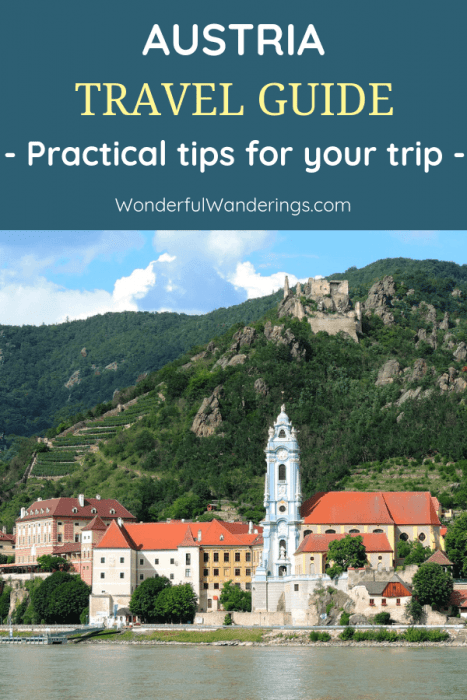
Join 58,000+ other Wonderful Wanderers!
As an Amazon Associate I earn from qualifying purchases.
Welcome to the Holiday Information Service
Our holiday experts are here to assist you with your holiday planning. Send us a message and we will get back you as soon as we can.
Please fill in fields marked with *
Give us a call Monday to Friday from 8am to noon. Outside of our office hours please drop us an email and we'll be happy to answer your questions.
Telephone: 00800 400 200 00 Österreich Werbung Vordere Zollamtsstraße 13 A-1030 Wien Wien AT
*toll-free; calls from mobile networks may incur charges
Nomadic Matt's Travel Site
Travel Better, Cheaper, Longer
Austria Travel Guide
Last Updated: April 29, 2024

Austria is a stunning country bursting with history and culture. From Vienna’s imperial architecture to sprawling vineyards to snowy alpine peaks to world-class opera and ballet, Austria has something for everyone and every budget.
Whether you’re backpacking around the country or just traveling here on a short trip, Austria has a lot to offer.
Vienna is the gateway to much of Central Europe; Graz and Linz boast historic old towns and funky cafes; and Salzburg is a picturesque Baroque city close to mountains and lakes. The country is also home to the dramatic “Sound of Music” alpine scenery where you can hike in the summer, ski in the winter, and sing as you run through the rolling hills.
I am forever blown away by the sheer beauty of this country. It is one of the most spectacular in Europe (especially if you like hiking and skiing).
This travel guide to Austria has all my tips and tricks so you can plan the ultimate adventure without breaking the bank!
Table of Contents
- Things to See and Do
- Typical Costs
- Suggested Budget
- Money-Saving Tips
- Where to Stay
- How to Get Around
- How to Stay Safe
- Best Places to Book Your Trip
- Related Blogs on Austria
Click Here for City Guides
Top 5 things to see and do in austria.
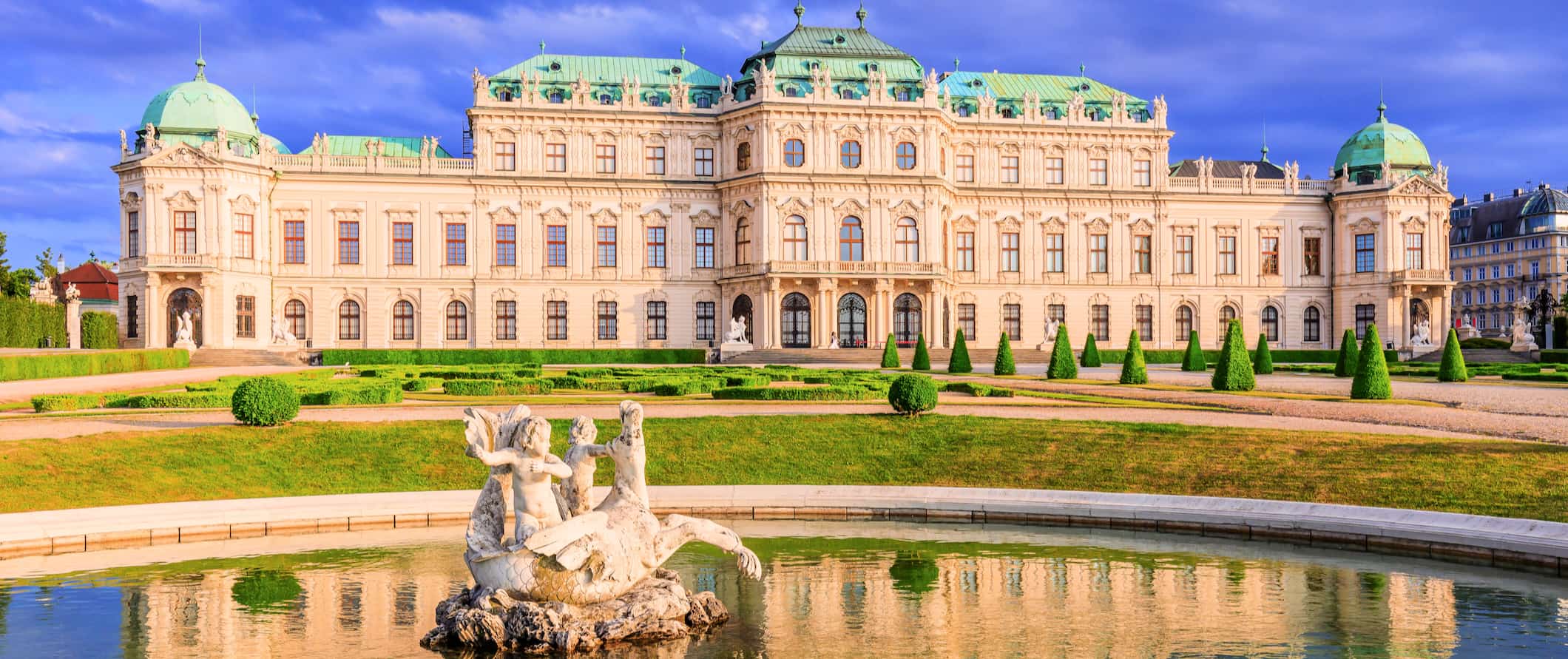
1. Visit Vienna
For centuries, Vienna was the stomping ground for the Habsburg rulers of the Austro-Hungarian Empire. Today, you can admire ornate architecture by day and hang in summer pop up bars and clubs on the Danube at night. Be sure to check out the Belvedere Palace, The Hofburg (a palace complex with museums), and Schonbrunn Palace (the summer home with a huge garden that is my favorite). Some other incredible things to do include a trip to the Vienna Naschmarkt (with more than 120 food stalls and market vendors) or an afternoon at MuseumsQuartier, a massive arts and culture district. If you go during the holiday season, Vienna’s Christmas markets are legendary, including Christkindlmarkt on Rathausplatz (the square in front of the town hall), one of the biggest and oldest markets in the world. This imperial city has a lot to do!
2. Check out Salzburg
The birthplace of Mozart, this city has a lot of attractions relating to the city’s most famous son. Visit the house where he was born and have coffee at Café Tomaselli where Mozart used to frequent. The city was also the shooting location for “The Sound of Music” and you can take a self-guided walking tour retracing the Von Trapp’s steps. There’s also an 11th century fortress (Hohensalzburg Castle), a Renaissance palace (Schloss Hellbrunn), scenic hikes, cobblestone streets, cool cafes, beautiful churches, views of the Alps, and a ton of Baroque charm. I really liked it and found it to be like a Vienna without the crowds (I mean it’s still crowded but not as crowded).
3. Ski in Arlberg
St. Anton is a particularly lovely town in summer but it swarms with visitors during ski season. With 87 lifts and cable cars, more than 300 kilometers (186 miles) of slopes and 200 kilometers (124 miles) of open terrain, it’s Austria’s largest inter-connected ski area and is known as a go-to destination for serious skiers because of its challenging slopes and numerous off-piste opportunities. Day passes start at 75 EUR per person (not including rentals).
4. Go on a wine tour
Austria’s vibrant wine scene has earned a worldwide reputation for quality and innovation. The country’s wine regions are beautiful and easy to visit. Burgenland and Lower Austria, for example, are within a one-hour drive from Vienna. You’ll be able to sample reds, whites, and Sekt, Austria’s sparkling wine. Expect a full-day winery bike tour of the stunning Wachau Valley to include 2-3 wine tastings and to cost 100 EUR. I always include a wine tour when I run tours to Vienna and it’s the number one thing people remember about the trip.
5. Cycle the Danube
This is one of the most famous cycle routes in Europe, stretching from Passau, Germany into Austria. Since it’s also one of the most traveled, there’s no lack of tour operators offering holiday packages. Depending on where you begin and end, the entire journey can take 4-6 days. Expect to pay 400-500 EUR for a self-guided multi-day tour of the journey, which usually includes accommodation, a set of cycling maps, and daily luggage transfer. Guided tours start at about 1,000 EUR.
Other Things to See and Do in Austria
1. visit vienna’s museum of art history.
The Kunsthistorisches Museum is the largest art museum in the country, with works from ancient Egypt and Greece through to the 18th century. There are over 700,000 items in the collections so it’s worth taking the time to explore (especially if you’re a history buff like me). Opened in 1891, the primary collection originally belonged to the Hapsburgs, which includes tons of portraits, classical paintings from masters like Gustav Klimt, and armor. Admission is 21 EUR.
2. Hit the slopes
Austria’s mountainous countryside offers up plenty of opportunities for skiing in the winter (I mean, it is the Alps after all!). Ski and snowboard rentals start at around 50 EUR. Lift passes vary between 40-70 EUR per day and the more popular and larger resorts tend to be on the upper end of that scale (but you get more ski runs for that). Niederau, Lech, and Obergurgl are good places for beginners.
3. See St. Stephen’s Cathedral
Stephansdom is a 12th-century Romanesque and Gothic cathedral in Vienna, noted for its colorful roof. The cathedral has been destroyed and rebuilt over the years, with the current version largely initiated by Duke Rudolf IV (1339–1365). Its most recent reconstruction took place just after World War II. You can take a tour of the cathedral and climb the north and south towers (which offer excellent views of the city). Under the cathedral are catacombs holding the remains of over 10,000 people, including important nobility and victims of the plague. All-inclusive admission with tour is 25 EUR; admission to the cathedral only is 7 EUR. Self-guided audio tours are 5 EUR. Catacombs tours are 7 EUR and going up the towers costs 6.50 EUR for the South Tower and 7 EUR for the North Tower.
4. Walk the Ring Road (Ringstrasse)
This historic loop stretches just over 5 kilometers (3 miles) around Vienna and is brimming with beautiful architecture. It’s here where you can find the Parliament building, City Hall, both the Museum of Art History and the National History Museum, as well as the State Opera. Strolling the tree-lined boulevards is a relaxing (and free) way to spend some time soaking up the city and admiring its history and imperial design.
5. Visit Schloss Hellbrunn
This Baroque palace was built in the 17th century in Salzburg as a retreat for the one percent, and is considered one of the most beautiful Renaissance buildings north of the Alps. The palace is noted for its trick water fountains that are hidden in benches, tables, and around the grounds. These “secret” fountains spray visitors when they don’t expect it. It’s funny to see — as long as you aren’t the one getting sprayed! The gardens here are partially landscaped and make for a great place to relax. It’s even fun to visit even in the winter months when the courtyard is transformed into a Christmas market. The palace and trick fountains are closed for winter refurbishments until late March 2024, but the park is still open. Admission is 15 EUR.
6. Visit the National History Museum
Home to a detailed anthropology exhibit, as well as a planetarium and prehistoric exhibit, the National History Museum is worth the time to explore if you’re a museum buff. Their collection boasts over 100,000 items, including a huge collection of meteorites. It’s also home to the 25,000-year-old Venus of Willendorf statue, which was discovered in Austria. There’s also a planetarium that offers shows in German and English (the live shows are only available in German). Admission is 18 EUR.
7. Get outside in Innsbruck
One of the most beautiful towns in the entire country, Innsbruck is in the Alps and filled with cobblestone streets, a historic center that dates back more than 500 years, and lots of great restaurants. It serves as a launching pad into the nearby Nordkette mountains where you can hike and camp. Don’t miss the Golden Roof, an impressive alcove balcony with 2,657 copper tiles covering its roof (it’s the best museum in the city!). There’s a lot of great hiking in the area, cool bars, and one of the best food tours I’ve ever taken (Innsbruck Food Tour). It’s an awesome city for outdoor activities any time of the year. Since it’s a big student town, it’s also one of the more affordable destinations in the country. I could have easily spent double the amount of time here.
8. Relax in Hallstatt
Hallstatt makes a great day trip from Salzburg (it’s just one hour away). The tiny, picturesque town is a UNESCO World Heritage Site that you can see in a single day. Spend an hour walking around the central square, home to a 19th-century church and fairytale alpine architecture. For impressive views, visit the skywalk above town — don’t look down if you’re afraid of heights. It’s a one-hour hike to the top or a 5-minute funicular ride on the Salzbergbahn Hallstatt, which re-opens in early February 2024 (22 EUR). There’s also a swan-filled lake, a waterfall, a bone house with more than 6,000 decorated skulls, and nearby mountains that provide ample hiking opportunities. You can take a tour of the nearby salt mines (the world’s oldest) or take a scenic boat ride on the lake. Hallstatt also serves as a gateway to the Salzkammergut region, where you can find even more lakes, forested mountains, and historic villages.
9. See a classical performance
Austria has contributed its fair share of composers to the world, so it’s no surprise that you can find plenty of opportunities to indulge in the classics here. Just going to one of the many theaters and concert halls in Vienna is an experience in and of itself as the buildings are so historic and beautifully decorated. If you’ve ever considered taking in an opera, symphony, or ballet (the Vienna State Ballet is one of the best in the world), this is the place to do it. Prices vary depending on the performance but expect to pay at least 40 EUR for standard tickets. Alternatively, show up a few hours before the opera for standing room only tickets that start at 4 EUR.
10. Go hiking
Hiking trails in Austria are well-marked, and there are even mountain huts along many trails to provide shelter. With almost 30% of the country’s natural landscape marked as protected, it’s easy to see why hiking is such a foundational part of the culture here. Pack a lunch, hit the trails, and enjoy all that the country has to offer! The Pinzgauer Spaziergang route in Zell am See is one of the best hikes you can do, covering 17 kilometers (10.5 miles) from Saalbach to Schmittenhöhe’s peak. If you’re looking for a more serious trek, try the 280-kilometer (175-mile) Eagle Walk from St. Johann to St. Anton am Arlberg. There are also several smaller hikes that offer flat paths around lakes and forests.
11. Visit Graz’s Old Town
This UNESCO World Heritage Site boasts over 1,000 buildings, many of which date back to the Middle Ages. It’s a picturesque area worth exploring, especially if you love history and architecture. There are street cafes, art galleries, and lots of shopping opportunities here as well. Climb the 260 steps to the top of Schlossberg (the fortress on the hill) for sweeping views. If you want a guided tour of the area, they start at around 20 EUR. While Graz is the second-largest city in Austria, it sees far fewer tourists than Vienna.
12. Visit Mozart’s Geburtshaus
Located in Salzburg, the townhouse where Mozart was born in 1756 (he was the family’s seventh child) and spent his childhood years is now a museum. The living area of this once middle-class residence has been restored to be a snapshot of the musician’s 18th-century life with original furniture. Noteworthy pieces include several portraits of Mozart, hand-written letters on display as well as his violin and clavichord (which he used to compose The Magic Flute). There are also rotating exhibits that change annually. The tour is about an hour and admission is 13.50 EUR.
13. Visit the Belvedere
This is one of my favorite places in Vienna. A UNESCO World Heritage Site, the Belvedere is composed of two palaces and is split into the permanent collection at the Upper Belvedere, special exhibitions at the Lower Belvedere, and contemporary art at the Belvedere 21. It’s home to an incredible art collection spanning more than 800 years with works by Renoir, Monet, and Van Gogh and a large portrait collection (which is my favorite). There is also a rotating exhibit hall with renowned Austrian and international art. The free grounds feature beautiful fountains, gravel walkways, ponds, statues, plants, and flowers and are perfect for a stroll on a nice day. Admission starts at 16 EUR. You’ll save a few euros if you buy online ahead of time.
14. Wander Hohensalzburg Castle
Standing high over the city of Salzburg, this magnificent castle dominates the city. The fortress has been in use since the 11th century, though it’s undergone several expansions and renovations. There’s a nice hike up to the castle (it takes about 30 minutes), or you can take the funicular. At the castle, there are ancient ruins, a cool historical tour, and panoramic views of the city to enjoy. The fortress also has a collection of museums, including the Marionette Museum and the Museum of the Rainer Regiment (which highlights the former Salzburg house military regiment). Admission is 14 EUR and includes the funicular.
15. Explore the Sigmund Freud Museum
Sigmund Freud, the famous founder of psychoanalysis, lived in this apartment-turned-museum from 1891-1938. The museum was opened in 1971 with the help of Anna Freud (his youngest daughter) and is home to the original furniture, Freud’s private collection of antiques, and the first editions of his works. There are also films from his private life. It’s small and only takes about an hour to visit. Admission is 15 EUR.
Austria Travel Costs
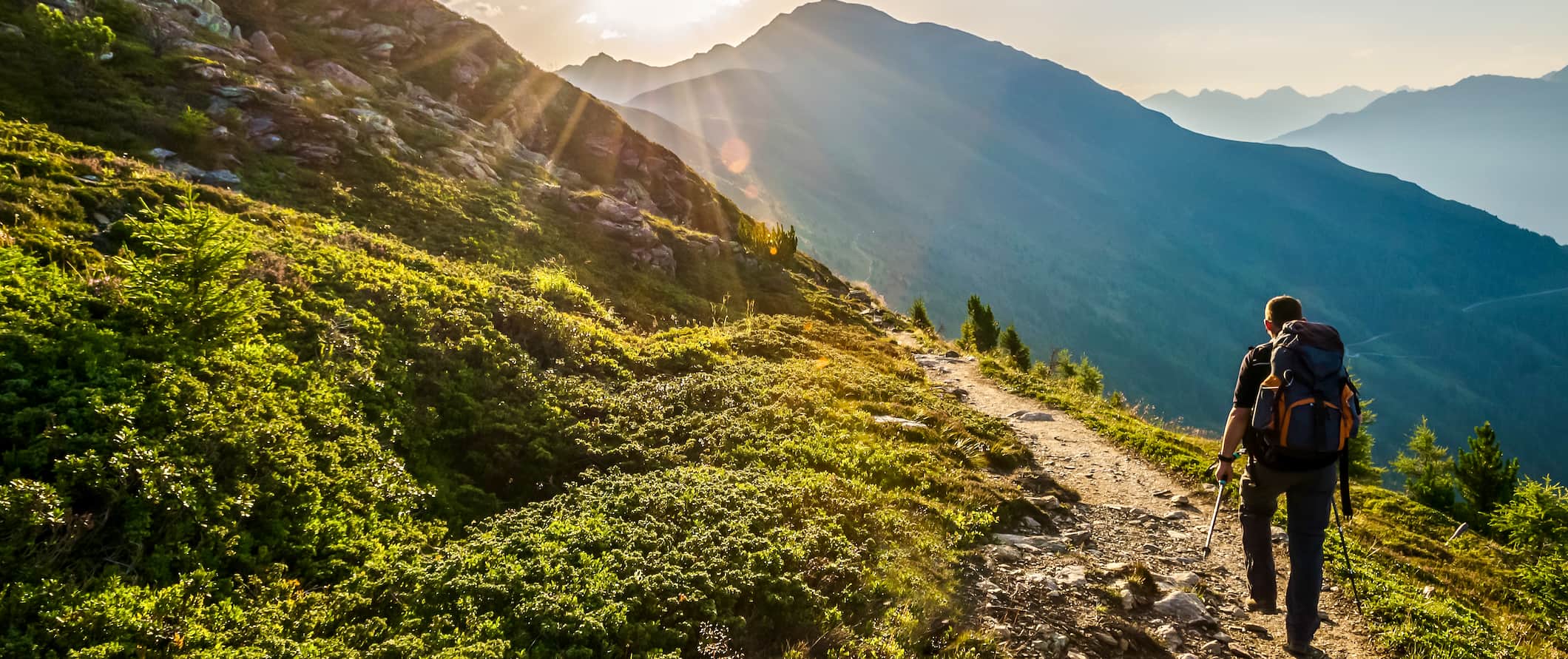
For anyone traveling with a tent, camping is available around the country. There are a few hundred campgrounds scattered around, costing around 5 EUR per night in the low season and around 22 EUR in peak season (July-August). These plots usually do not include electricity.
Two-star budget hotels range from 60-80 EUR per night. Expect basic amenities like TV and Wi-Fi.
Airbnb is another budget option, with private accommodation starting at 50 EUR per night. For an entire home or apartment, expect to pay at least 65 EUR per night (though prices average around 100 EUR).
Food – Austrian cuisine is a meat-oriented one, with soups, stews, and pastries rounding things out. Popular dishes include rindsuppe (beef soup), smoked meat with sauerkraut, wiener schnitzel, strudel, and tafelspitz (beef boiled in broth). Breakfast usually is centered on bread or rolls with cheese and cold meats. For a wider choice of vegetarian options, look for affordable restaurants near the many universities.
A typical inexpensive restaurant meal of traditional cuisine like schnitzel costs around 15 EUR. Expect to pay at least 30 EUR for a three-course meal at a mid-range restaurant. Dessert (such as pie or baked goods) is usually around 4-8 EUR.
If you’re on a budget, stick to eating at the local markets where you can find a great selection of traditional Austrian food (like schnitzel, goulash, sausages, and potatoes) as well as Asian, Greek, and Middle Eastern dishes for around 10-14 EUR.
Fast food (think McDonald’s) costs around 9 EUR for a combo meal. A large pizza should cost less than 20 EUR while Chinese food is 10-15 EUR for a main dish.
A beer at the bar costs around 4.25 EUR while a latte/cappuccino/tea costs 3-4 EUR. Wine is around 5 EUR and bottled water is 2.20 EUR. Soft drinks cost around 2.75 EUR.
If you are planning to cook your own food, a week’s worth of groceries costs around 40-60 EUR for basic staples like rice, pasta, vegetables, and some meat.
Backpacking Austria Suggested Budgets
On a backpacker budget of 65 EUR per day, you can stay in a hostel dorm, cook all of your meals, visit a few museums, take a free walking tour, limit your drinking, and take public transportation to get around. If you plan on drinking, add 5-10 EUR to your budget per day.
On a mid-range budget of about 160 EUR, you can stay in an Airbnb or private hostel room, eat out for some meals, have a few drinks at the bar, see more museums and palaces, day trip to Bratislava, and take the occasional taxi to get around.
On a “luxury” budget of 330 EUR per day, you can stay in a hotel, eat out for all your meals, drink out at the bar as much as you’d like, visit more palaces or go to the opera, rent a car or take taxis to get around, and do some private guided tours. This is just the ground floor for luxury though. The sky is the limit!
You can use the chart below to get some idea of how much you need to budget daily, depending on your travel style. Keep in mind these are daily averages — some days you’ll spend more, some days you’ll spend less (you might spend less every day). We just want to give you a general idea of how to make your budget. Prices are in EUR.
Austria Travel Guide: Money-Saving Tips
Expenses in Austria can add up quickly with all its pricey accommodations, high-end restaurants, and costly outdoor activities and tours. However, there’s plenty of free activities and delicious cheap eats to help keep your costs down. Here are some tips on how to save you money when you visit:
- Take a free walking tour – Vienna offers a handful of free walking tours which are great ways to get familiar with the city and the culture. Good Tours , Anna Loves Vienna , Vienna Greeters , and The Original Free Vienna Walking Tour are all great options — just be sure to tip your guide at the end!
- Visit museums for free – Many museums in Vienna are free to visit the first Sunday of every month. That list includes the Wien Museum, Museum of Military History, the Uhrenmuseum (clock museum), and the Roman Museum
- Ride the Flixbus – Flixbus is a budget-friendly way to explore the country. They have Wi-Fi, electrical outlets, and decent enough sites for overnight and long-haul bus journeys.
- Cook your own meals – Many hostels here don’t include kitchen facilities, so if you want to save money make sure you book accommodation that does. Buying your own groceries may not be as glamorous as going out to eat, but it definitely saves you money!
- Stay with a local – Staying with a local via Couchsurfing (or similar sharing economy sites) is a great way to not only save money but you get to meet a knowledgeable local who can help you better understand the country and its people.
- Skip the City Airport Train in Vienna – Unless you are in a rush to get downtown, skip the City Airport Train. It’s 11 EUR compared to the regular train that is only around 4.30 EUR. The time difference is negligible, and that extra 6.70 EUR is better spent on a cold beer!
- Walk everywhere – All of the major cities in Austria are quite walkable. Skip public transportation to save a few euros.
- Enjoy the free spaces – There are plenty of free parks as well as many free hiking trails around the country. Save your budget and enjoy the outdoors!
- Bring a reusable water bottle – The tap water here is clean and safe so bring a reusable bottle to save money and reduce your single-use plastic usage. LifeStraw is my go-to brand since they have built-in filters to always ensure your water is clean.
Where to Stay in Austria
Austria has plenty of hostels that are fun, clean, and affordable. Here are some of my favorite places to stay:
- Wombats City Hostel (Vienna)
- The MEININGER Hotel (Vienna)
- Der Salzburger Hof and Hotel-Annex (Salzburg)
- Hostel Marmota (Innsbruck)
- The A&O Graz Hauptbahnhof (Graz)
- Jugendgaestehaus Linz (Linz)
How to Get Around Austria
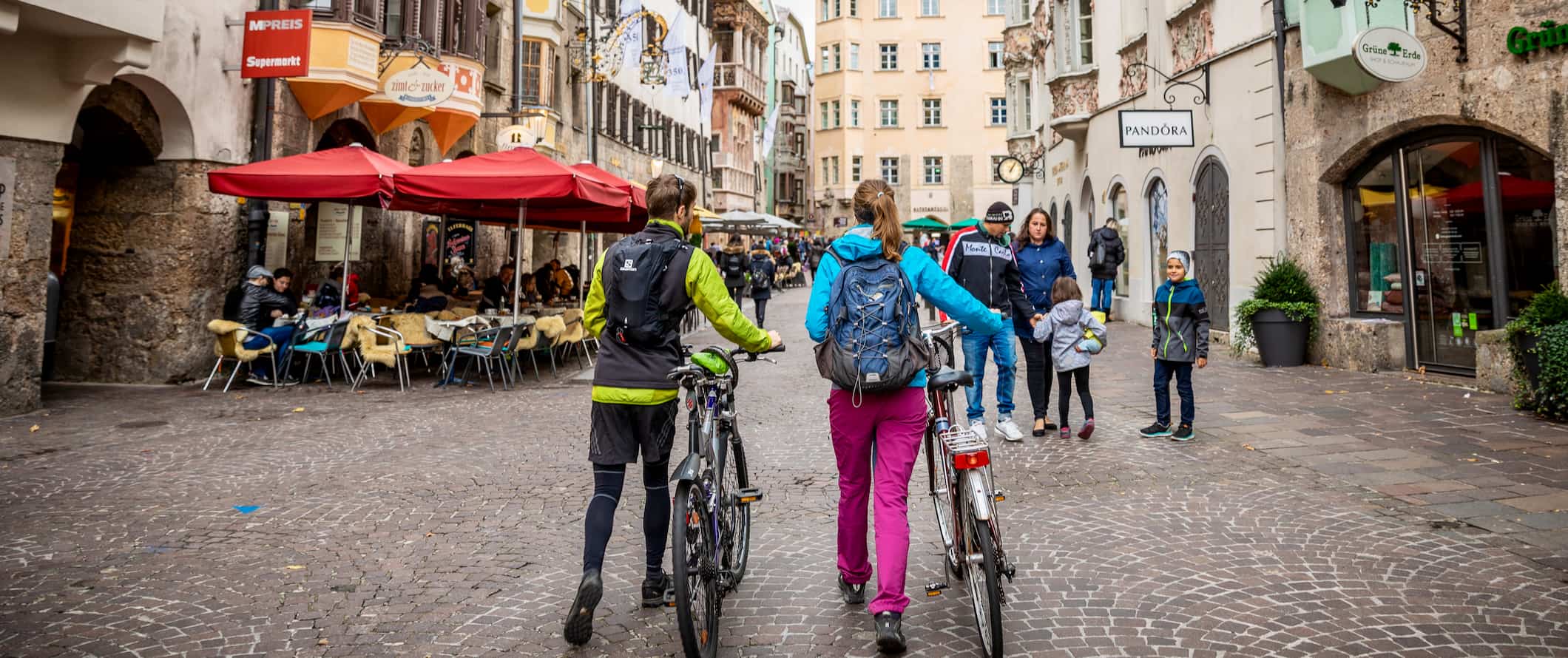
Public transportation – Public transportation is clean, safe, and reliable across Austria, with lots of options within larger cities. Expect to pay around 2.40 – 2.60 EUR for a one-way adult ticket on Vienna’s trams, underground subway, and buses. The underground (U-Bahn) runs from about 5:00 AM to midnight and is open 24 hours on Friday and Saturday. Several bus lines run from 12:30 AM. to 5 AM. Always validate your ticket at the machine before boarding. In Graz, a one-hour tram pass is 3 EUR, and tram and bus prices in Salzburg start at 2.30 EUR. Most cities offer day passes, such as Vienna’s 24-hour pass for 8 EUR (there’s also a 48-hour pass for 14.10 EUR and 72-hour pass for 17.10 EUR).
Train – Trains are the best way to get around Austria. They’re fast and affordable, with tickets from Vienna to Graz (2.5 hours) costing as little as 25 EUR and Vienna to Salzburg (3 hours) costing around 40 EUR — those prices require advance booking. Tickets to nearby cities outside of Austria are quite affordable, too. For example, Vienna to Prague (4 hours) starts at about 40 EUR while Vienna to Budapest (2 hours) costs about 30 EUR. Consider Nightjet, Austria’s overnight train. Destinations include Salzburg, Vienna, Innsbruck, Bregenz, and Arlberg. Additionally, you can take it to more than a dozen countries. Prices start at around 40 EUR to Berlin, or about 60 EUR to Paris for carriage seats. Expect to pay more than 100 EUR for a sleeper cabin.
To find routes and prices for trains around Europe, use Trainline .
Bus – Flixbus has routes from Vienna to Graz and Vienna to Bratislava. It’s the cheapest way to get around. The ride from Vienna to Graz offers tickets for as low as 10 EUR (the train costs 40 EUR) while the journey to Bratislava is just 5 EUR.
To find bus routes and prices, use BusBud .
Flying – Flying around the country is possible, but it’s not going to save you any time once you factor in getting to/from the airport. Flights are usually double or triple the price of the train at best, so I’d avoid flying when you visit. The country is small and the trains are fast.
Ridesharing – Use the ride-sharing app BlaBlaCar for both medium and long distances. You can usually find rides for popular routes if you look a couple of days in advance. All you do is pay a small fee (essentially chipping in for gas) and you’re on your way. It usually isn’t much cheaper than the bus, but it’s faster and more interesting!
Car rental – Car rentals cost 20-40 EUR per day. Make sure you have an International Driving Permit (IDP) before you rent as it is required. To find the best car rental prices, use Discover Cars .
When to Go to Austria
There’s no wrong time to visit Austria. The summer months (June-August) offer the best weather, with daily highs around 30°C (86°F). Go in summer for activities like music festivals, “beach” events on the Danube, and plenty to see in the palace gardens across the country. Summer is peak season for tourism so expect crowds in Vienna and Salzburg.
Winter is from December to March. It gets cold, with temperatures dropping as low as -15 °C (5°F). That said, November and December are considered to be the most magical months in Vienna and Salzburg because of their famous Christmas markets and snow-covered alpine villages. It’s also the best time for skiing or snowboarding in the Alps. There are also plenty of holiday concerts and classical music events in Vienna in December.
Personally, I think the best time to visit Austria is shoulder season in the spring and fall (April-June and September-October). It’s still warm during this time but there aren’t as many crowds. This time of year is especially good for outdoor activities like hiking and cycling. In spring, the hillsides are blooming, and October and early November offer amazingly vibrant fall foliage.
How to Stay Safe in Austria
Austria is a very safe country. Violent crime here is rare, and it’s generally safe to walk or take public transportation at night. The only real issue you need to be on the lookout for is petty theft and pickpocketing, which can occur in high-traffic areas in Vienna and Salzburg. As a general rule, don’t wear flashy jewelry or wave around valuables, and always keep your wallet secure when out and about. If you’ve rented a car, don’t leave valuables or suitcases inside where they are visible.
Scams here are rare, but you can read about common travel scams to avoid.
Always check the weather before going off hiking and make sure you have everything you need (water, raincoat, food, etc.). Be mindful that you might not have cell coverage in remote areas, especially in the mountains.
Solo female travelers should feel safe here, however, the standard precautions apply (never leave your drink unattended at the bar, never walk home alone intoxicated, etc.). In Vienna and Salzburg, several hostels offer female-only rooms. If you experience an emergency, dial 112 for assistance.
The most important piece of advice I can offer is to purchase good travel insurance. Travel insurance protects you against illness, injury, theft, and cancellations. It’s comprehensive protection in case anything goes wrong. I never go on a trip without it as I’ve had to use it many times in the past. You can use the widget below to find the policy right for you:
Austria Travel Guide: The Best Booking Resources
These are my favorite companies to use when I travel. They consistently have the best deals, offer world-class customer service and great value, and overall, are better than their competitors. They are the companies I use the most and are always the starting point in my search for travel deals.
- Skyscanner – Skyscanner is my favorite flight search engine. They search small websites and budget airlines that larger search sites tend to miss. They are hands down the number one place to start.
- Hostelworld – This is the best hostel accommodation site out there with the largest inventory, best search interface, and widest availability.
- Booking.com – The best all around booking site that constantly provides the cheapest and lowest rates. They have the widest selection of budget accommodation. In all my tests, they’ve always had the cheapest rates out of all the booking websites.
- HostelPass – This new card gives you up to 20% off hostels throughout Europe. It’s a great way to save money. They’re constantly adding new hostels too. I’ve always wanted something like this and glad it finallt exists.
- Get Your Guide – Get Your Guide is a huge online marketplace for tours and excursions. They have tons of tour options available in cities all around the world, including everything from cooking classes, walking tours, street art lessons, and more!
- The Man in Seat 61 – This website is the ultimate guide to train travel anywhere in the world. They have the most comprehensive information on routes, times, prices, and train conditions. If you are planning a long train journey or some epic train trip, consult this site.
- Rome2Rio – This website allows you to see how to get from point A to point B the best and cheapest way possible. It will give you all the bus, train, plane, or boat routes that can get you there as well as how much they cost.
- FlixBus – Flixbus has routes between 20 European countries with prices starting as low 5 EUR! Their buses include WiFi, electrical outlets, a free checked bag.
- SafetyWing – Safety Wing offers convenient and affordable plans tailored to digital nomads and long-term travelers. They have cheap monthly plans, great customer service, and an easy-to-use claims process that makes it perfect for those on the road.
- LifeStraw – My go-to company for reusable water bottles with built-in filters so you can ensure your drinking water is always clean and safe.
- Unbound Merino – They make lightweight, durable, easy-to-clean travel clothing.
- Top Travel Credit Cards – Points are the best way to cut down travel expenses. Here’s my favorite point earning credit cards so you can get free travel!
Austria Travel Guide: Related Articles
Want more info? Check out all the articles I’ve written on backpacking/traveling Europe and continue planning your trip:

The Perfect 7-Day Croatia Itinerary

The 6 Best Hotels in Copenhagen

The 6 Best Hotels in Florence

The 7 Best Hotels in Madrid

The 6 Best Hotels in Vienna

The Best Walking Tours in Barcelona
Get my best stuff sent straight to you, pin it on pinterest.
- Where To Stay
- Transportation
- Booking Resources
- Related Blogs
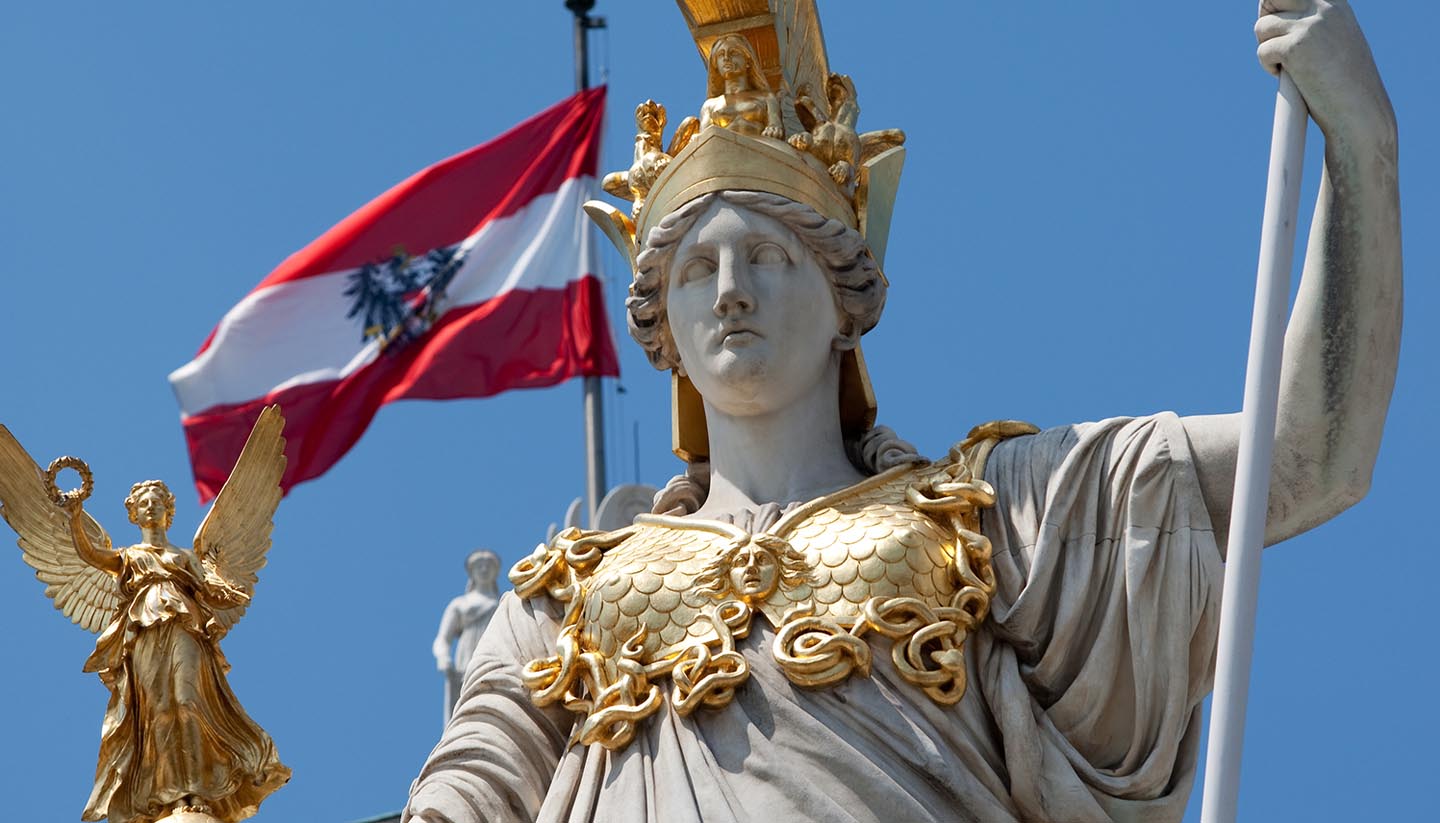
Introducing Austria
- About Austria
- Images of Austria
- History, language & culture
- Weather & geography
- Doing business & staying in touch
Plan your trip
- Travel to Austria
- Where to stay
While you’re there
- Things to see & do
- Shopping & nightlife
- Food & drink
- Getting around
Before you go
- Passport & visa
- Public Holidays
- Money & duty free
Book your flights
- Blue Danube Airport Linz
- Graz Airport
- Innsbruck Airport
- Salzburg Airport
- Vienna International Airport
Ski Resorts
- Bad Gastein
- Saalbach-Hinterglemm
- St Wolfgang
- Zell am See
Getting Around Austria
Vienna is connected to Graz, Klagenfurt, Linz, Innsbruck and Salzburg by Austrian Airlines ( www.aua.com ).
Side of the road
Road quality.
Austria has an excellent network of roads.
All the major car hire companies are represented in Austria, with offices in most cities, as well as at airports and main railway stations.
Regulations
Tolls must be paid on all Austrian motorways and 'S' roads. Tourists can purchase either 10-day, two-month or one-year discs which are available at all major border crossings, newsagents, petrol stations, automobile clubs, ÖAMTC and ARBÖ, and at post offices. There will be a digital vignette available as of 2018.
Cars must be driven with lights throughout the year. Seat belts must be worn and children under the age of 12 and under 150cm (4ft 11in) tall may not sit in the front seat unless a special child's seat has been fitted. All cars must have a first-aid kit and a warning triangle. All motorists must also carry high-visibility waistcoats and wear them whenever outside their vehicle on an Austrian roads. Both driver and passenger on a motorcycle must wear helmets, and the vehicle must have lights on at all times.
Speed limits are 50kph (31mph) in built-up areas, 100kph (62mph) outside built-up areas and 130kph (80mph) on motorways. The minimum legal age for driving is 18.
Documentation
National driving licences issued by EU countries, Norway, Iceland and Liechtenstein are accepted, and enable holders to drive in Austria for up to one year. UK licences without a photo must be accompanied by some form of photo ID such as a passport. Car registration papers issued in the UK are also valid in Austria. A Green Card is recommended, but not compulsory if travelling from another EU country.
Urban travel
Vienna has an extensive system of metro, bus, light rail and tramway services. Most routes have a flat fare, and there are pre-purchase multi-journey tickets and passes. The Vienna Card ( www.wienkarte.at ) entitles visitors to 24, 48 or 72 hours of unlimited travel by underground, bus and tram. It also entitles the holder to reductions at several museums and other tourist attractions in the city, as well as shops, cafes and wine taverns. The classic way to travel round the capital is by horse-drawn carriage ( Fiaker ); fares should be agreed in advance.
There are bus systems in all the other main towns, and also tramways in Linz, Innsbruck and Graz, and trolleybuses in Linz, Innsbruck and Salzburg.
Österreichische Bundesbahnen (ÖBB) (Austrian Federal Railways) (tel: +43 51717; www.oebb.at ) runs an efficient internal service. There is a frequent intercity service from Vienna to Salzburg, Innsbruck, Graz and Klagenfurt.
Rail Passes
Vorteilscard: offers a 45-50% discount on rail travel within a one-year period. This ID card can be purchased at all Austrian railway stations. The Vorteilscard Family allows four children under 15 to travel free when accompanied by a card-holding adult. InterRail One-Country Pass: offers travel for three, four, six or eight days in one month within Austria. Travel is not allowed in the passenger's country of residence. Travellers under 26 years receive a reduction. Children under 12 travel free when accompanied by an adult using an Adult Pass. Supplements are required for some high-speed services, seat reservations and couchettes. Available from Voyages-sncf.com (tel: +44 844 848 5848, in the UK; www.voyages-sncf.com ).
Eurail Austria Pass: offers travel for three, four, five or eight days in one month within Austria. Available to non-EU nationals from Eurail ( www.eurail.com ).
A number of operators run cruises along the Danube, and from Switzerland (Bregenz) across Lake Constance. On some cruises, a passport is needed; they last from one to eight days depending on the itinerary. These services run between spring and autumn.
Ferries: There are regular passenger boat services from mid-May to mid-September along the Danube and on Austria's lakes. The Danube services are run by DDSG Blue Danube Schiffahrt ( www.ddsg-blue-danube.at ) and private companies.

Related Articles
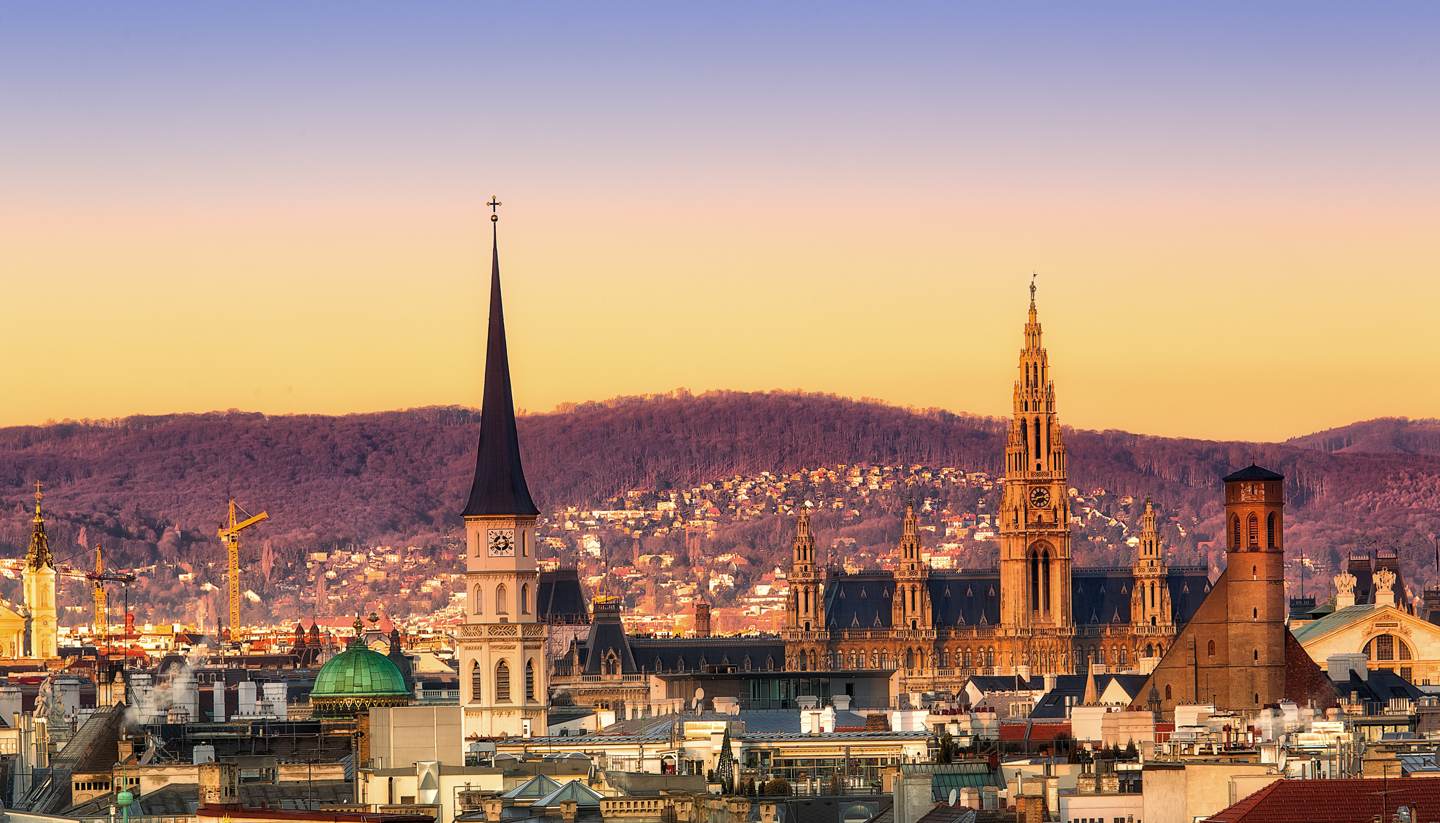
City Highlight: Vienna
Discover the blend of Baroque grandeur and space-age museums in Vienna, and see why it’s constantly voted one of the world’s most liveable cities
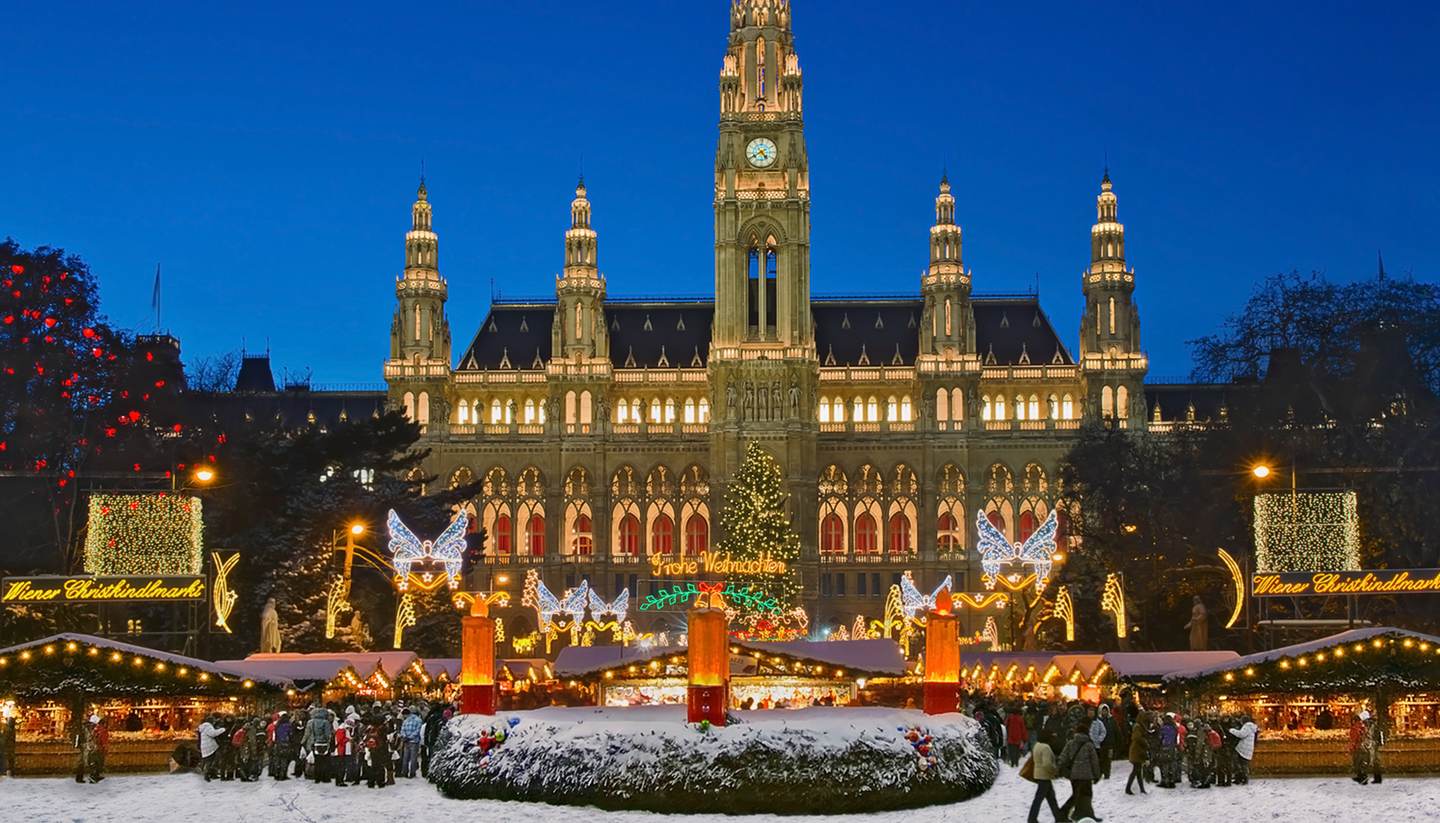
Vienna in December
Vienna transforms into an enchanting winter wonderland every December, so find out what you can do this holiday season in Vienna
Book a Hotel
© Columbus Travel Media Ltd. All rights reserved 2024

IMAGES
VIDEO
COMMENTS
A Holiday in Austria puts a Smile on your Face. An experience, an encounter, sometimes just a moment - and the new somehow feels familiar. In Austria, this atmosphere is literally in the air: A sensation that, in nature, feels light and free, full of fun and joie de vivre. A feeling that, while connecting with the people who live here, feels ...
Austria travel guide. About Austria. Despite its small size, Austria has a long-established international reputation, which is why most visitors arrive with heads full of Habsburg, Mozart and Alpine visions. ... The World Travel Guide (WTG) is the flagship digital consumer brand within the Columbus Travel Media portfolio. A comprehensive guide ...
Explore Austria holidays and discover the best time and places to visit. Lonely Planet. Destinations. Planning. Inspiration. Shop. Search. Saves. Open main menu. Austria ... Vienna's foremost opera and ballet venue, the neo-Renaissance Staatsoper, is one of the finest concert halls in the world. Even if you can't get tickets…
Here's our take on the best places to visit in Austria. 1. Zell am See. Sitting smugly on the shores of a bluest-blue lake and buttressed by lofty peaks, Zell am See is a knockout. The cheerful Alpine resort has sensational wilderness on its doorstep, including the glacier-capped 3203m (10,509ft) Kitzsteinhorn, where you can embark on a glacier ...
Plugs: In Austria, the plugs are type F, the standard voltage is 230 V, and the standard frequency is 50 Hz. I recommend buying a universal adapter (make sure it has surge protection) and using a converter for hairdryers and hot tools. Safety: Austria is an extremely safe country, with the most dangerous crimes being pickpocketing and petty theft.
Small, landlocked Austria offers alpine scenery, world-class museums, cobbled quaintness, and Wiener schnitzel. Unlike Germany, its industrious neighbor to the northwest, Austria is content to bask in its good living and elegant, opulent past as the former head of one of Europe's grandest empires. Austrians tend to be relaxed, gregarious people who love the outdoors as much as a good cup of ...
Austria and Czechia are home to some of the world's most beautiful architecture and culture gems, such as Schloss Schönbrunn in Vienna, Prague castle, the fortress above Salzburg and many more. Finish your tour with a visit to Schloss Neuschwanstein before flying out of Munich. view trip ⤍. 11 days / from3510 USD.
With two-thirds of the country's landscape shaped by the Alps, Austria is paradise for anyone eager to explore the mountains—or nature in general. Some of the world's top ski resorts can be found in the western part of the country. The regions around the Danube, as well as south of Vienna, are known for their many family-run wineries.
Austria is a small landlocked country right in the heart of Europe bordered by Czech Republic, Germany, Hungary, Italy, Liechtenstein, Slovakia, Slovenia and Switzerland. The landscape is mountainous with the Alps running right through the country and peaks rising up to over 3,500 metres. Almost half of Austria is forested while the other half ...
Austria Travel Map. In the map below, we've marked must-visit cities, towns, river valleys, hiking destinations, mountain huts, and hotels in Austria. For a curated list of top places to visit, read Best Places to Visit in Austria. If you're traveling to Austria in summer, read Summer in Austria and if you're traveling to Austria in ...
A Travel Guide to Austria with ️ Travel Itineraries, ️ Top places to visit in 2024, ️ Beautiful hikes, and more! Discover our Austria travel guides. Austria. ... Stop at one of Vienna's coffeehouses to get a taste of old-world elegance, or explore the little taverns in the mountain villages dating back many years. ...
Welcome to our Austria travel guide. Dripping with history, capital city Vienna is part of most traveller's Austrian itinerary. Get your bearings by walking Vienna's Ringstrasse. While many will argue that the grandeur of the Champs-Élysées can not be rivalled anywhere in the world, its hordes of tourists and crass retail make the Paris ...
Your Guide to Travel to Austria. Discover iconic landmarks such as the majestic Alps, historic Vienna, and the fairytale city of Salzburg, the birthplace of Mozart. Immerse yourself in Austria's vibrant culture through its world-class museums, classical music concerts, and traditional festivals. Indulge in the delectable flavors of Austrian ...
Relax and watch the world go by as you submit to Austria's Kaffeehaus (coffee shop) culture: cakes and puddings (such as torte, of which there are around 60 varieties) ... The World Travel Guide (WTG) is the flagship digital consumer brand within the Columbus Travel Media portfolio. A comprehensive guide to the world's best travel ...
The ultimate Austria travel guide: the best things to do and see. Sep 13, 2023 by The Go Ahead Tours Team. The best trips to Austria are multi-sensory adventures that include transporting music, intriguing history, delicious cakes, and postcard-worthy nature. This small Central European country may not have the same travel reputation as its ...
Austria travel guide: quick facts. Size: 83,879 km² or 32,385.86 sq mi People living there: more than 8,620,000 Capital city of Austria: Vienna Governmental structure: federal republic with a parliamentary representative democracy comprising nine federated states National day: October 26 Time zone: Central European Time / UTC+1 / GMT+1 Currency: euro (EUR) Power voltage and socket type(s ...
Travel to Austria: Information for your next holiday to Austria on austria.info, the official website of the Austrian National Tourist Office.
Austria Travel Costs. Accommodation - Hostel dorms are your cheapest accommodation option in Austria, with prices starting around 16 EUR per night for a 6-8-bed dorm (though they average closer to 45 EUR). For a private room, expect to pay 40-75 EUR per night.
Plugs & Sockets - Austria uses two plug types. Type C with two round pins and type F with earth clips on the side. Austria has a 230V supply voltage and 50Hz. Safety - Austria is safe to visit and has one of the lowest crime rates in the world. Climate - Austria has a temperate climate enjoying warm summers and mild winters inland. The mountain ...
The World Travel Guide (WTG) is the flagship digital consumer brand within the Columbus Travel Media portfolio. A comprehensive guide to the world's best travel destinations, its print heritage stretches back more than 30 years, with the online portal reaching its 20-year anniversary in 2019. Available in English, German and Spanish versions ...
• Austria boasts some strange place names including a town called Egg and a village called Fucking, which has been plagued by spates of signage theft. ... The World Travel Guide (WTG) is the flagship digital consumer brand within the Columbus Travel Media portfolio. A comprehensive guide to the world's best travel destinations, its print ...
Eurail Austria Pass: offers travel for three, four, five or eight days in one month within Austria. Available to non-EU nationals from Eurail (www.eurail.com). ... The World Travel Guide (WTG) is the flagship digital consumer brand within the Columbus Travel Media portfolio. A comprehensive guide to the world's best travel destinations, its ...